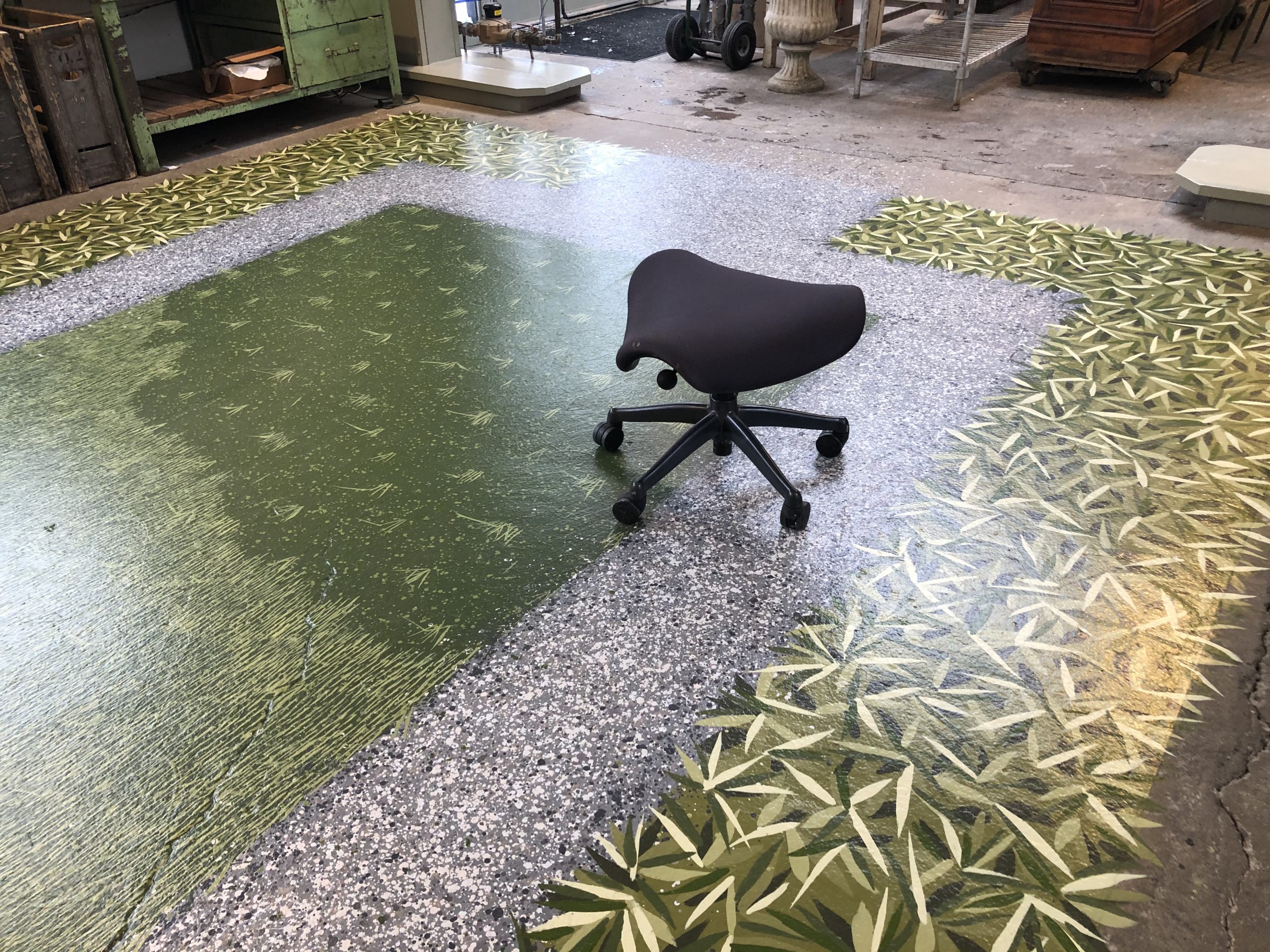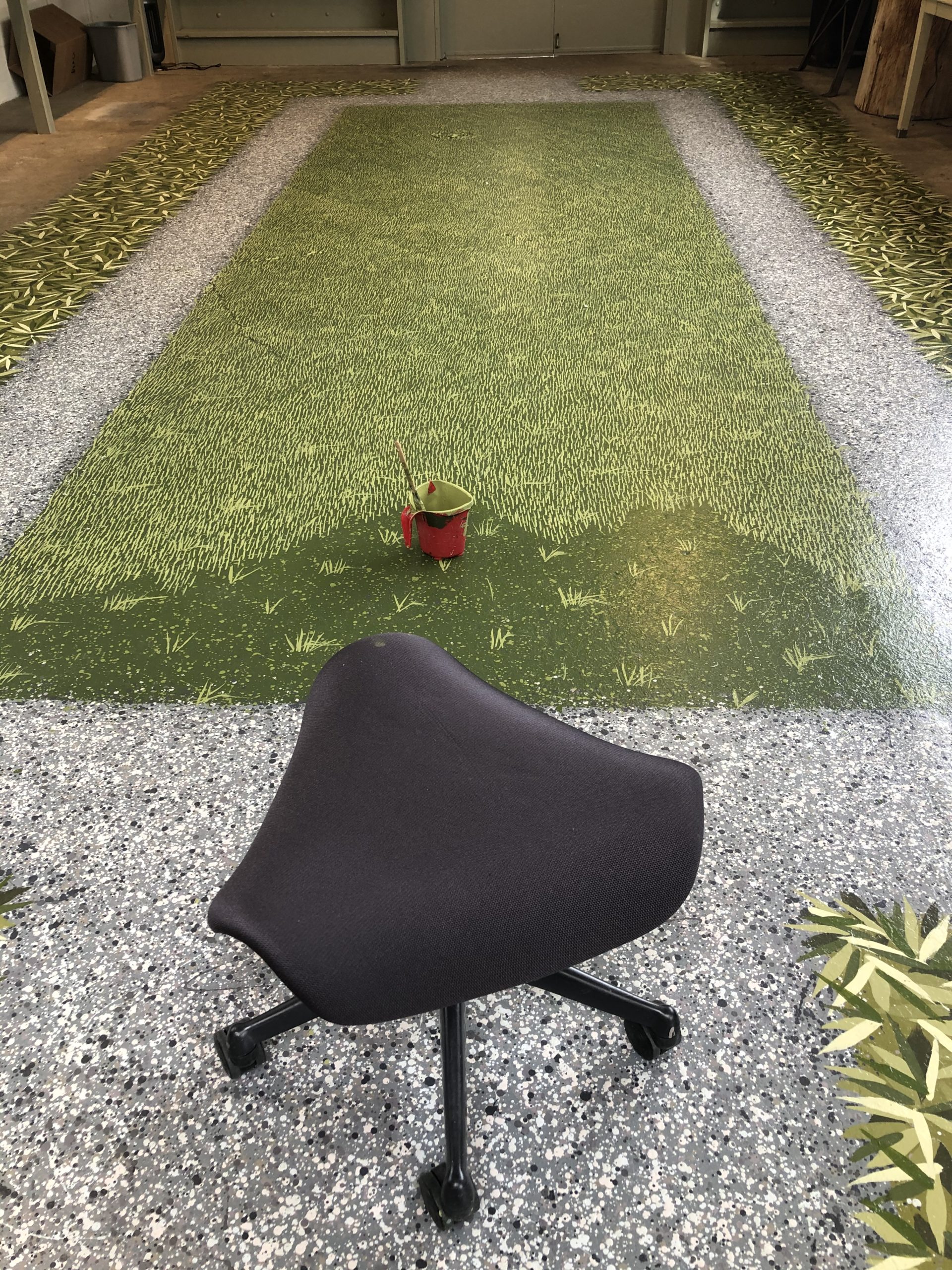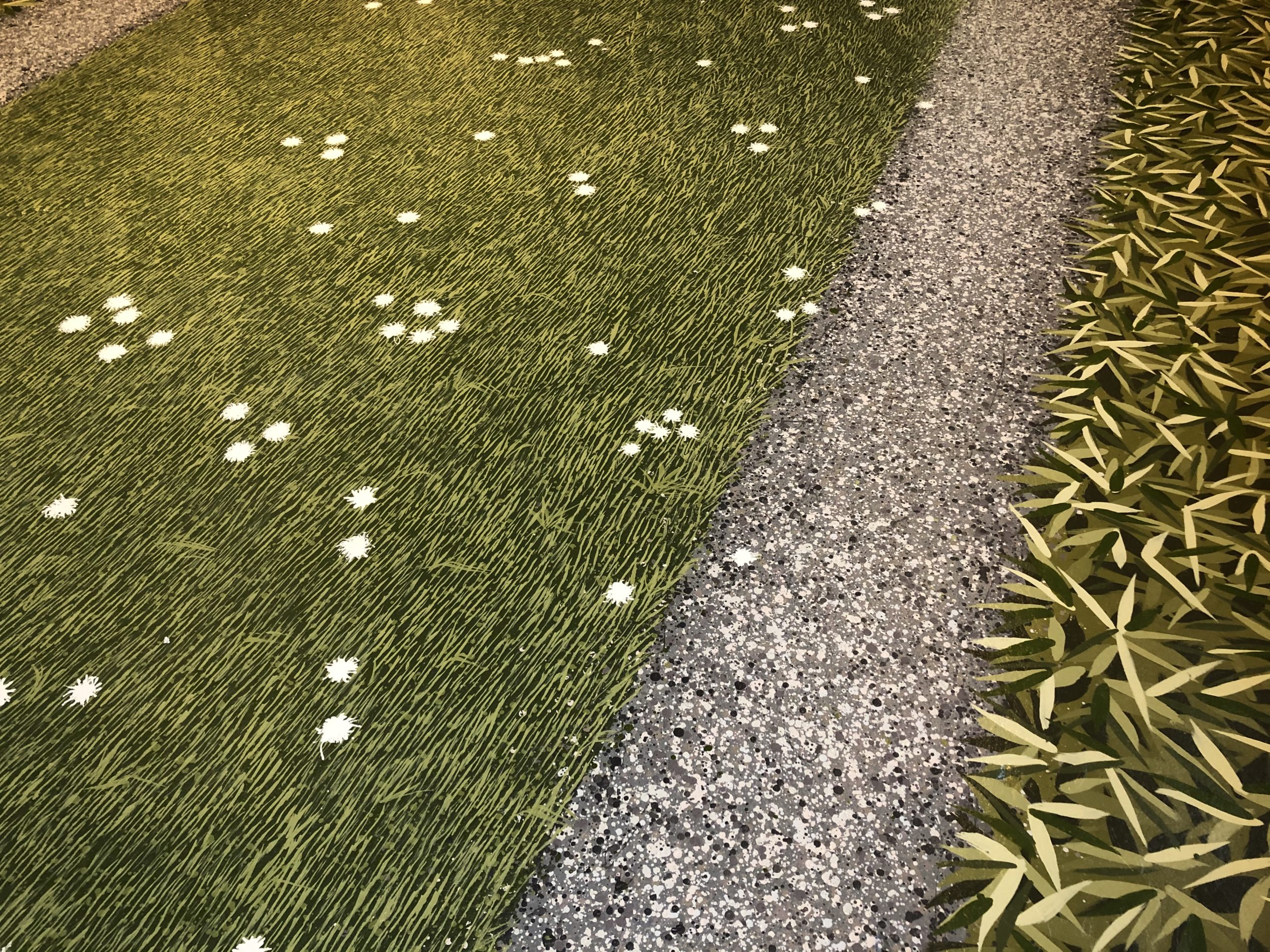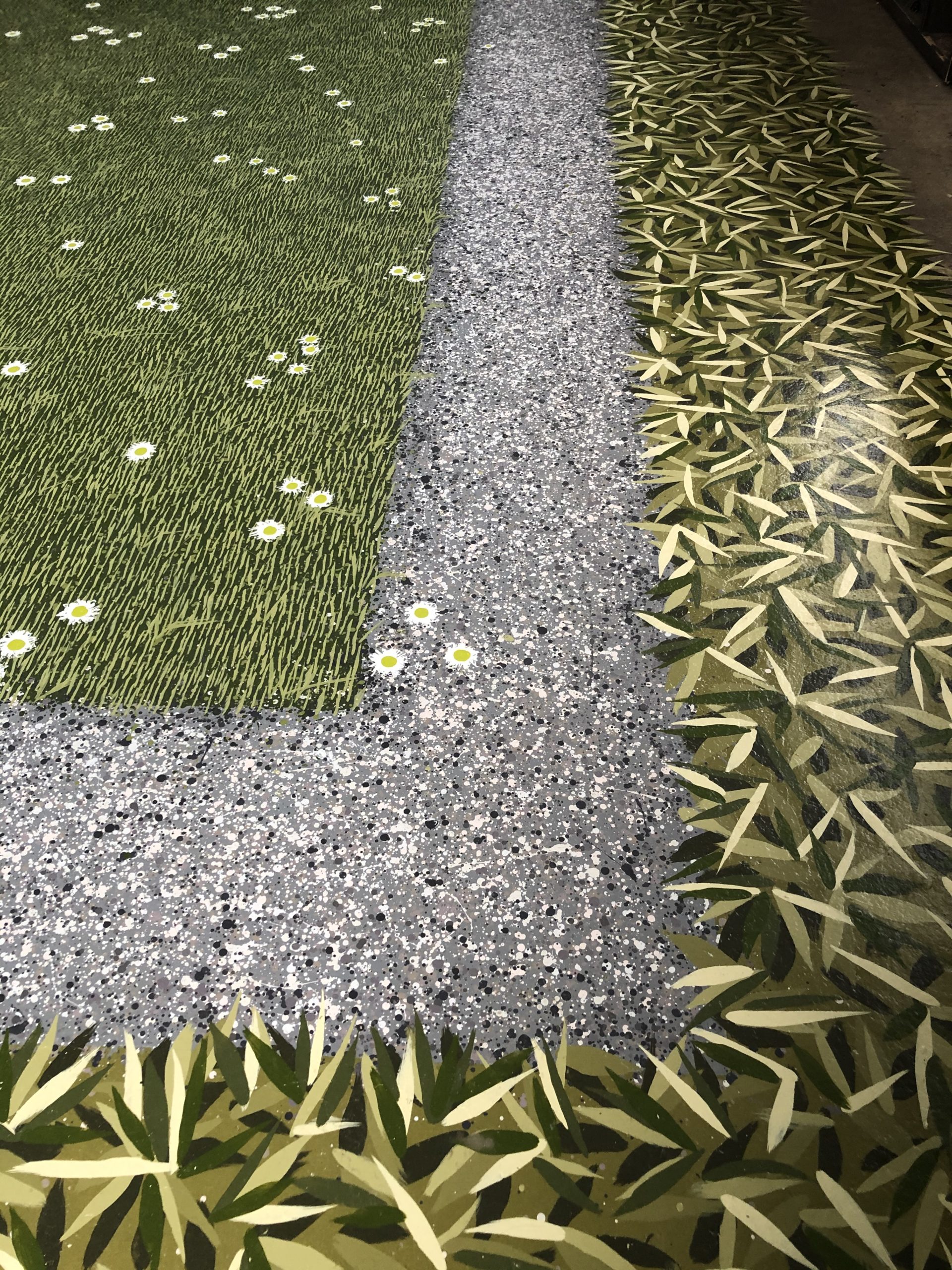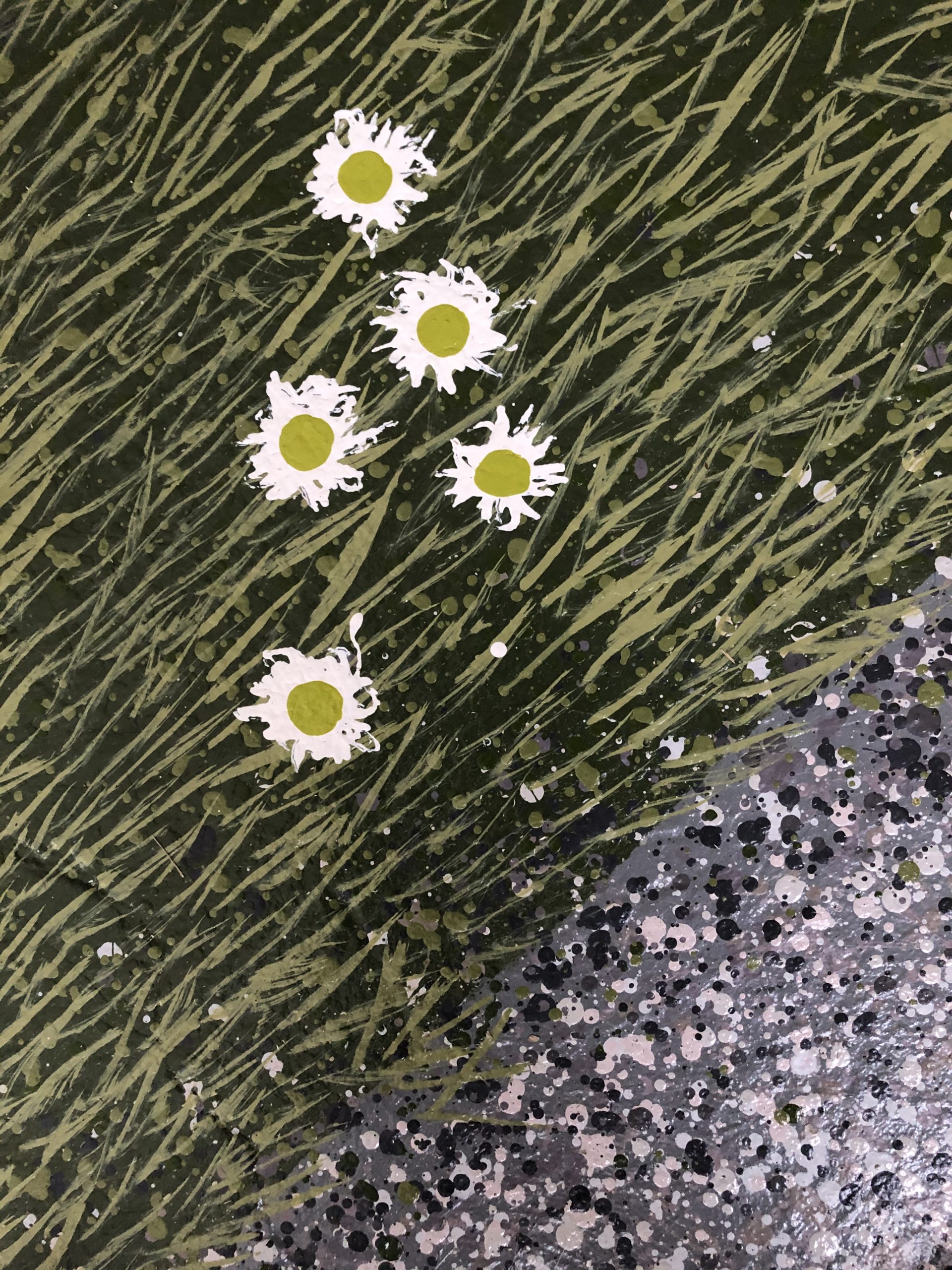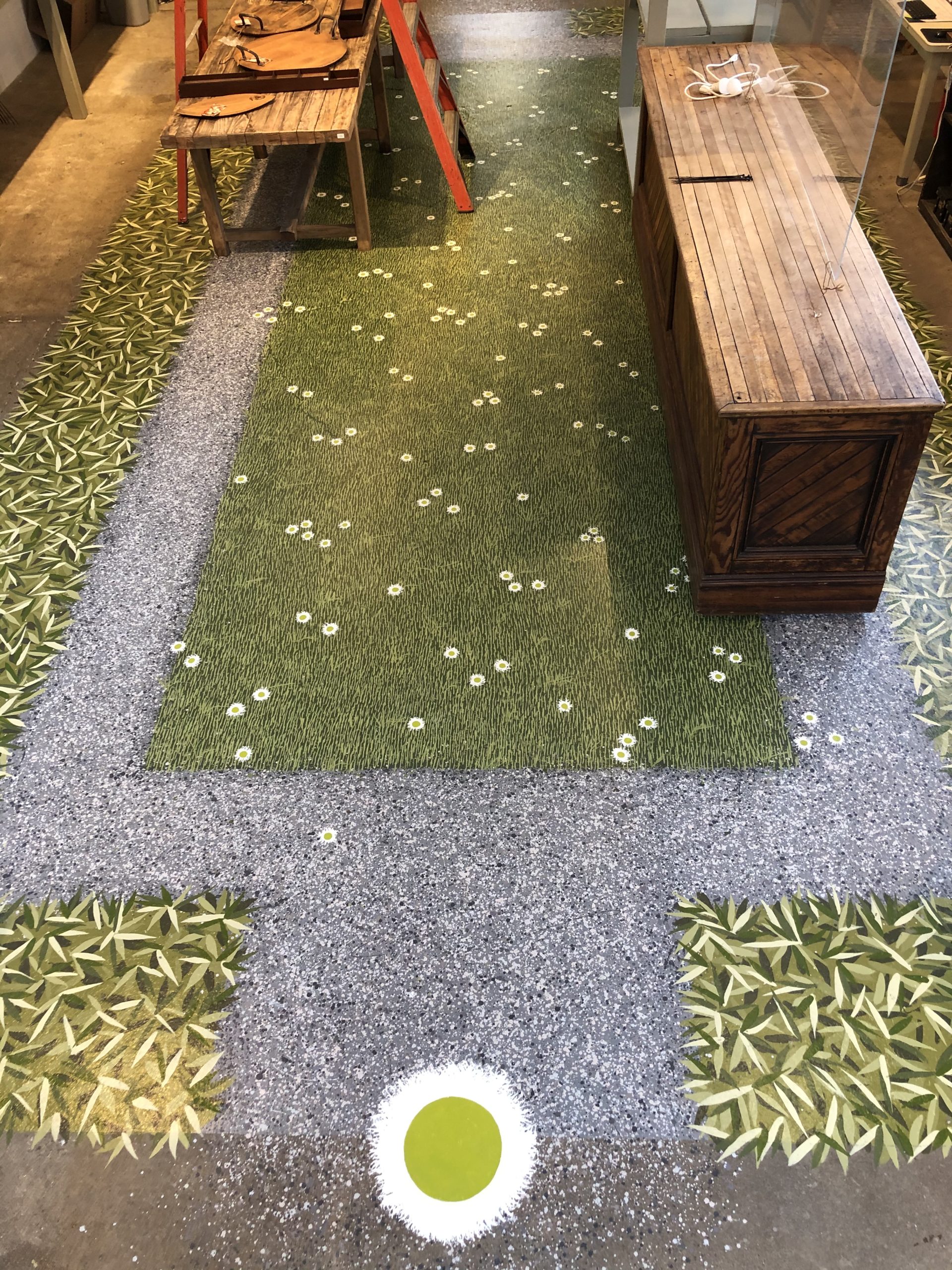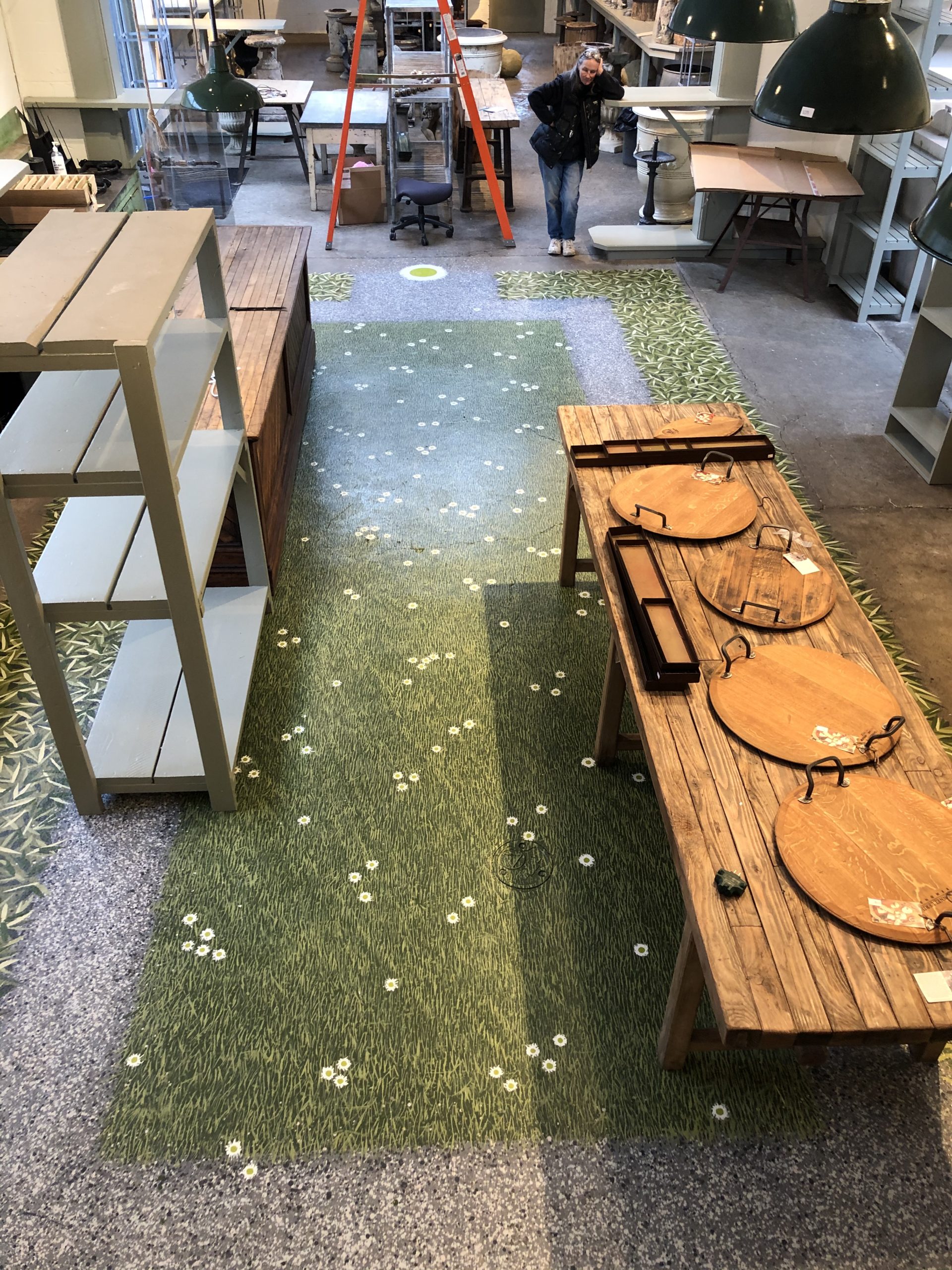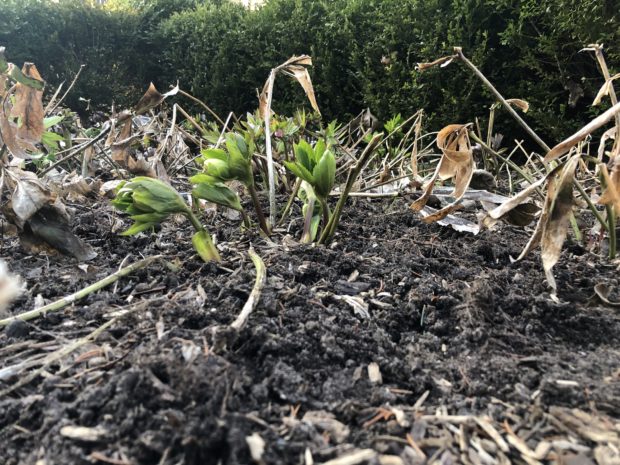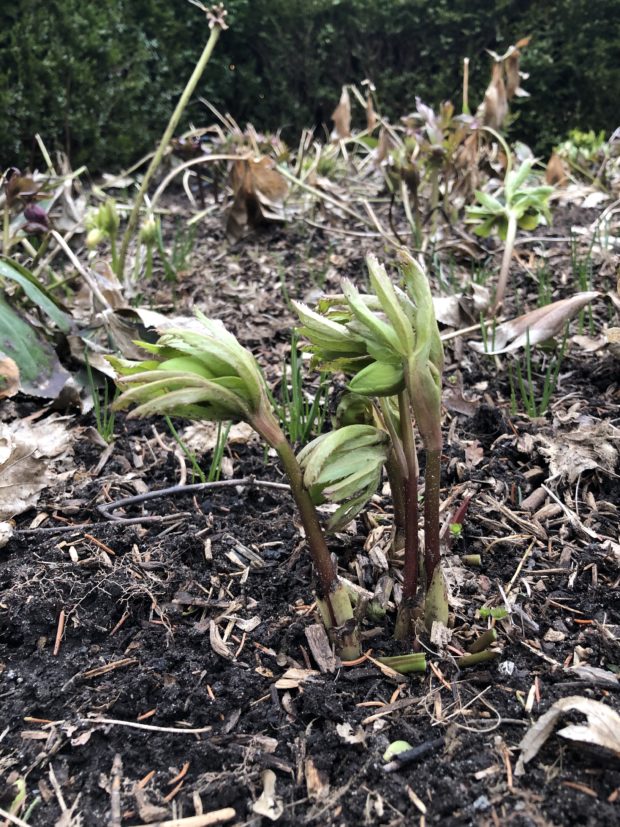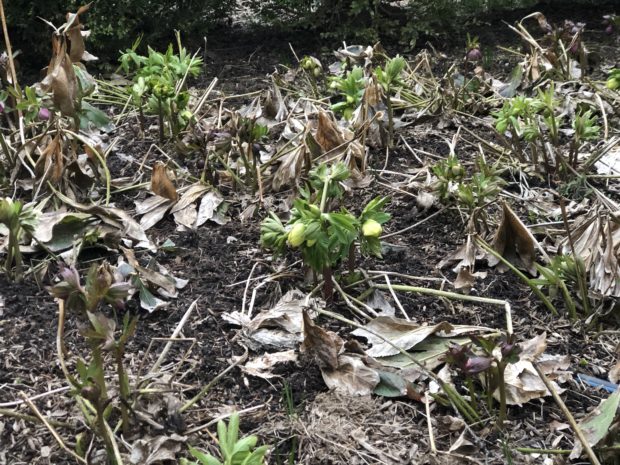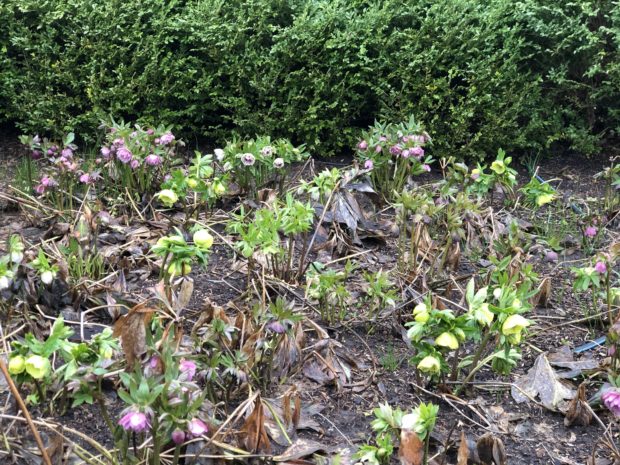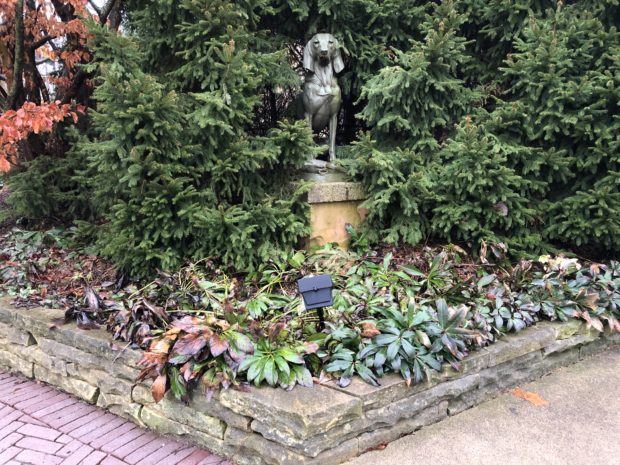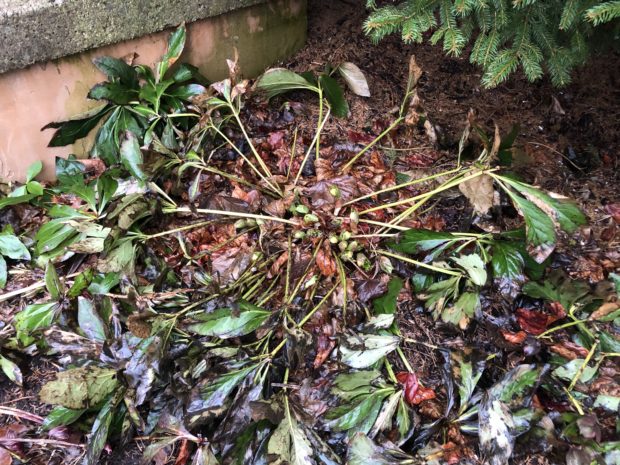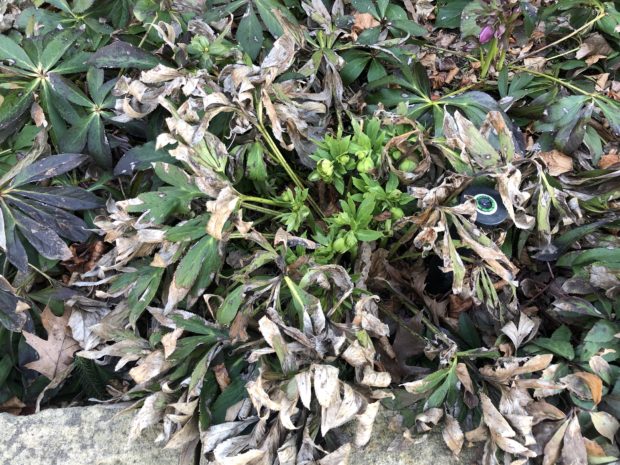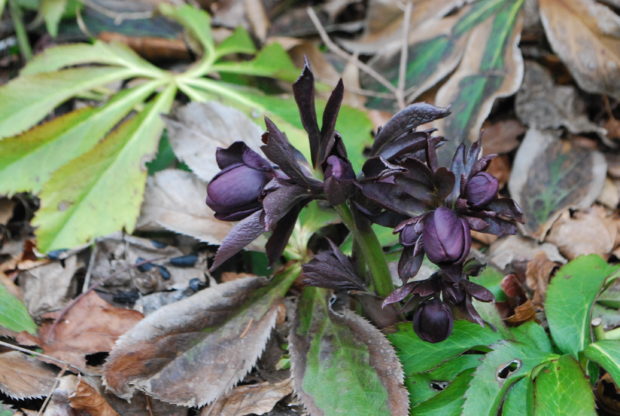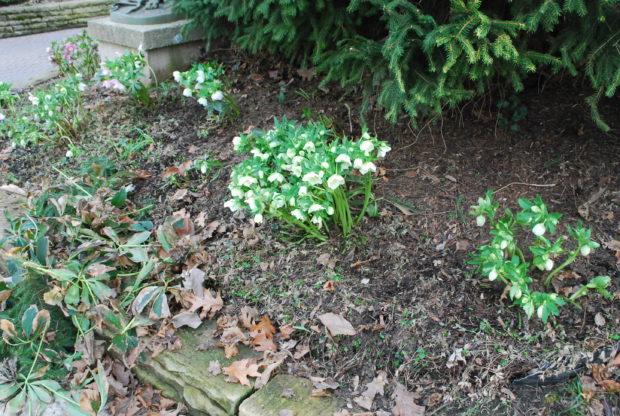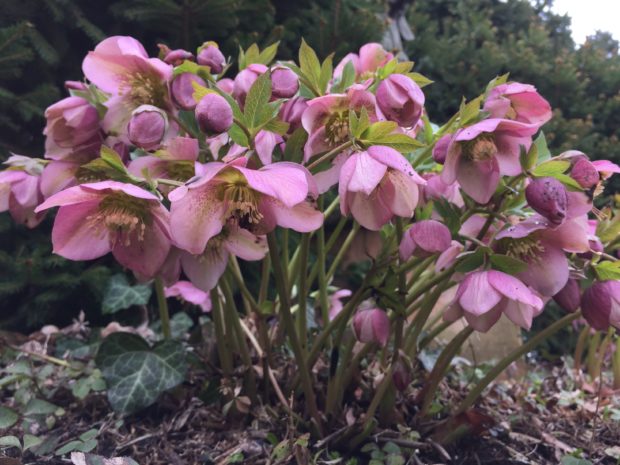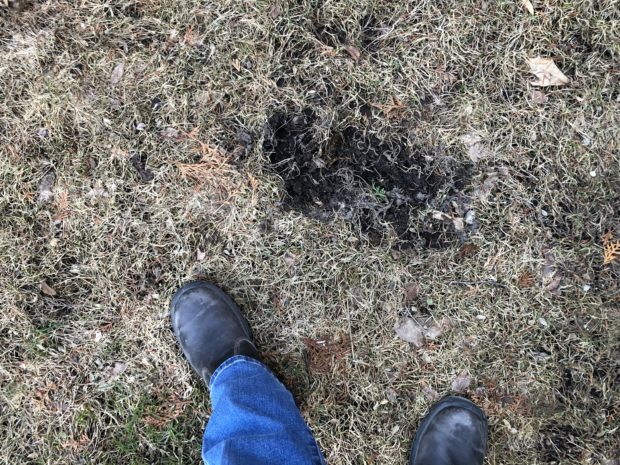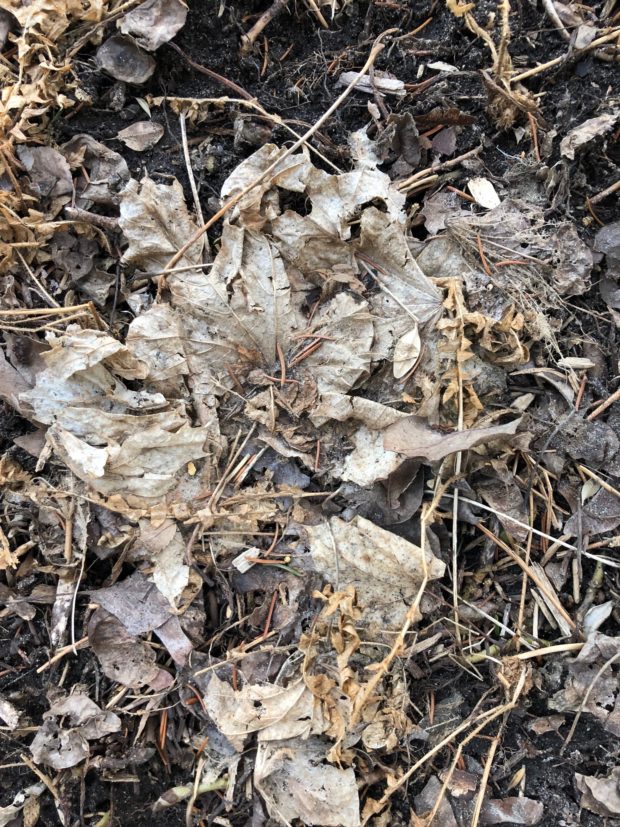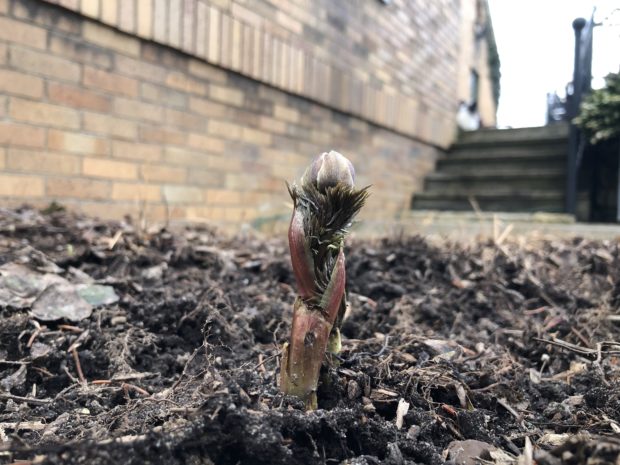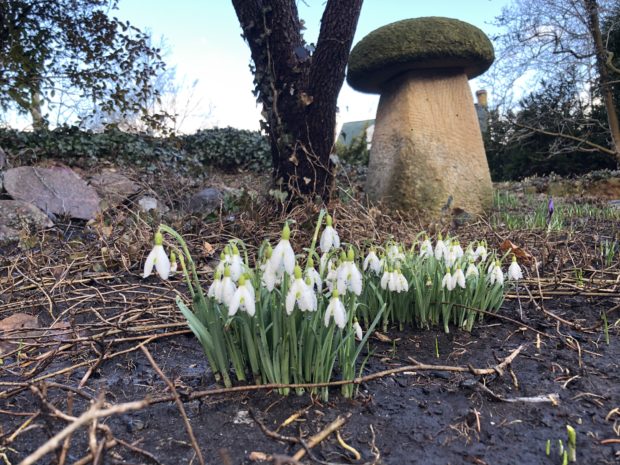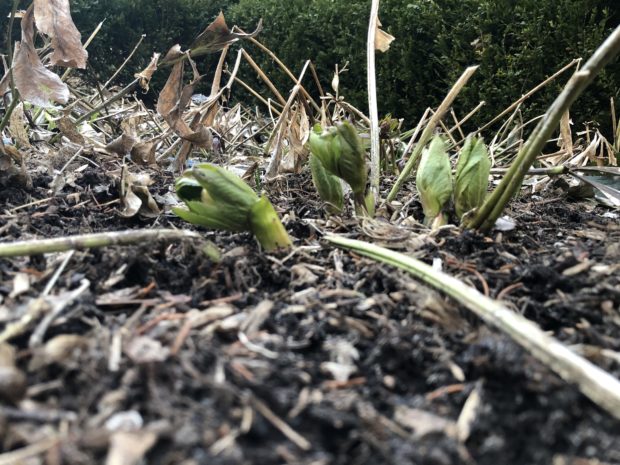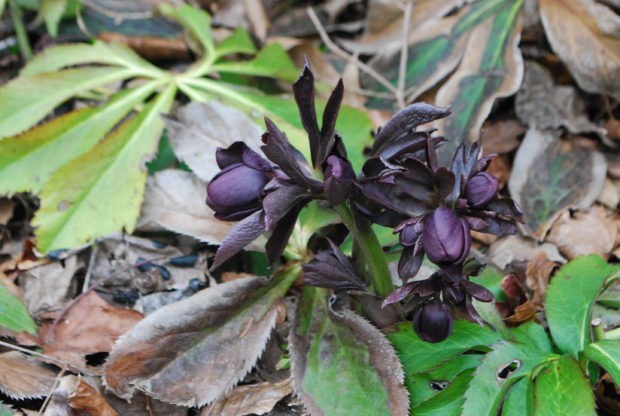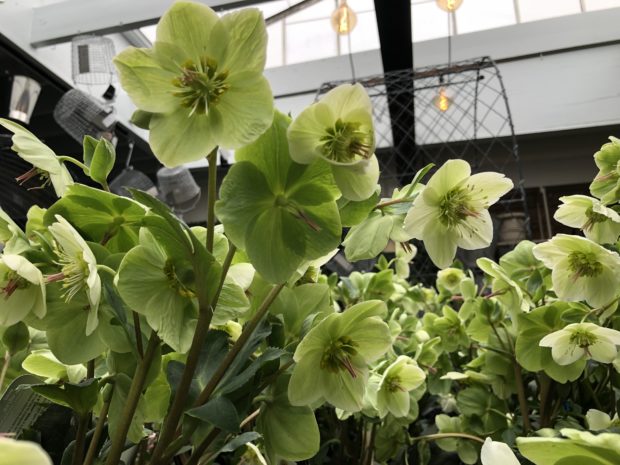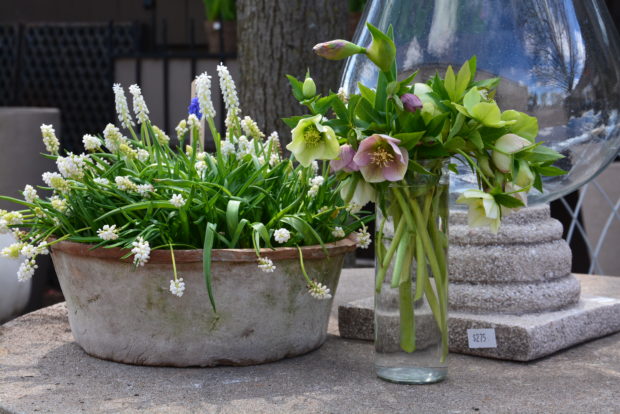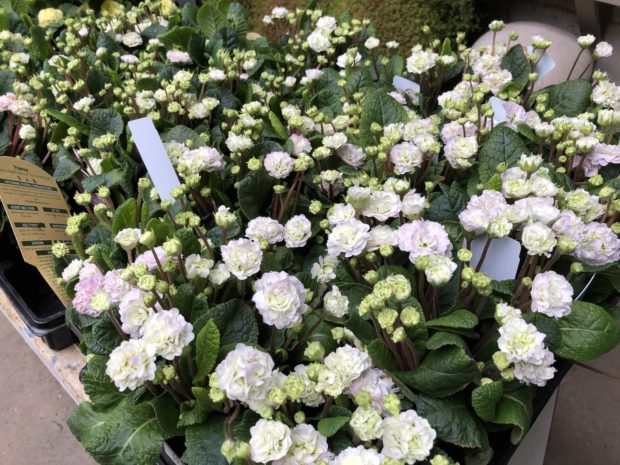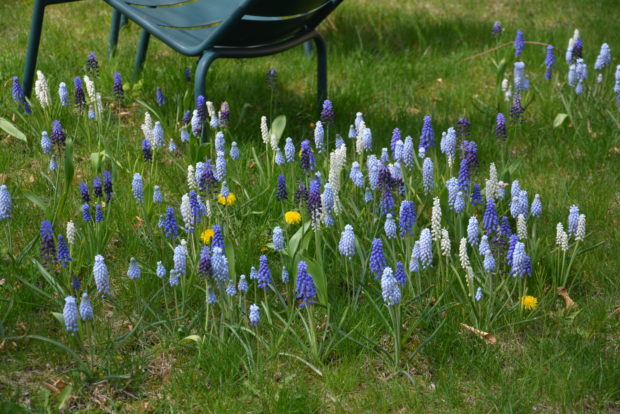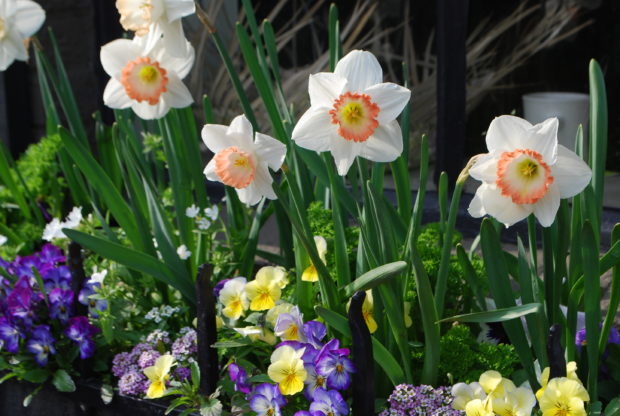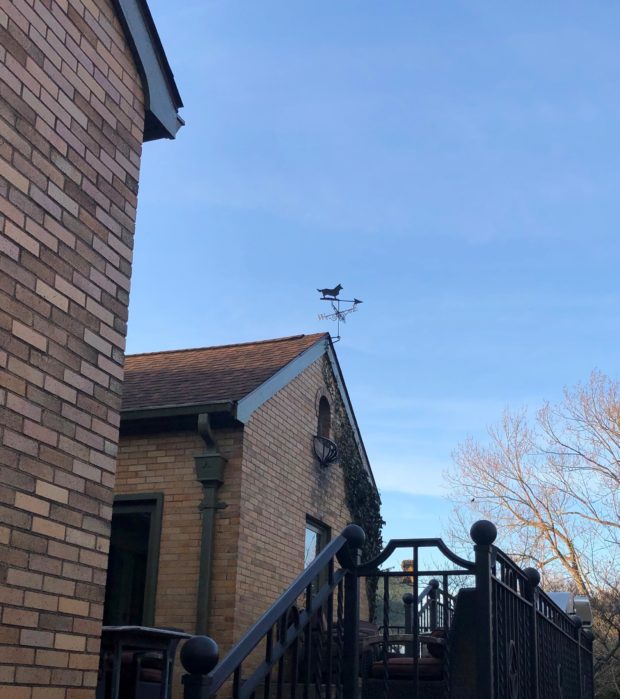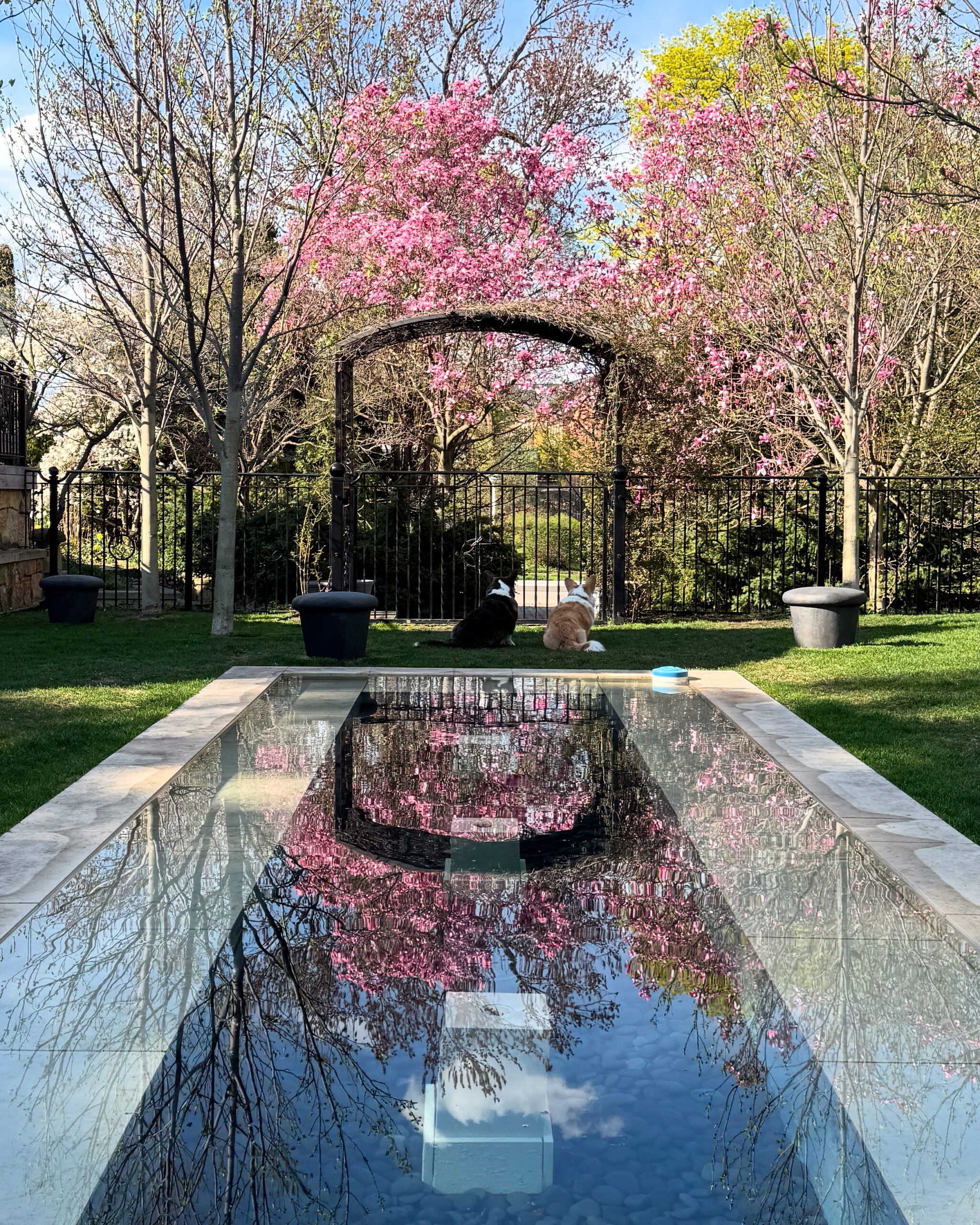 Once a year we have spring in Michigan, and this is it. Ha. Let that big talk on my part sink in a little. I am not at all sure we are having spring yet. Maybe what we have now is just a cold, rainy, and off putting version of pre-spring. Maybe I missed it – could our spring be just about over? Or is the real spring due here any minute. There are always caveats that come with any discussion of the change from one season to the next. Especially our spring. It was 35 degrees at my house this morning. It can safely be said that the interminable winter has shown some signs of moderating, and there have been tantalizing albeit brief instances of remarkably warm weather and blue skies. Nothing decisive yet. A cautious assessment is prudent. Nature can have a very hard time deciding to finally let go and get on with it. But all of the fits, starts and stalling make for some adult fun. Delayed gratification, they call this.
Once a year we have spring in Michigan, and this is it. Ha. Let that big talk on my part sink in a little. I am not at all sure we are having spring yet. Maybe what we have now is just a cold, rainy, and off putting version of pre-spring. Maybe I missed it – could our spring be just about over? Or is the real spring due here any minute. There are always caveats that come with any discussion of the change from one season to the next. Especially our spring. It was 35 degrees at my house this morning. It can safely be said that the interminable winter has shown some signs of moderating, and there have been tantalizing albeit brief instances of remarkably warm weather and blue skies. Nothing decisive yet. A cautious assessment is prudent. Nature can have a very hard time deciding to finally let go and get on with it. But all of the fits, starts and stalling make for some adult fun. Delayed gratification, they call this.

The hellebores are blooming emphatically, as they always do. They shrug off bad weather. Many of the small spring flowering bulbs have appeared, bloomed and already vanished. The eranthis, galanthus, chionodoxa, scilla, crocus, adonis, puschkinia, muscari, and a considerable cast of others, appear on their own schedule, and brave the stormy weather for better or worse. Some years the flowering is stingy, and other years profuse. You don’t know which way that world will turn until the day before.
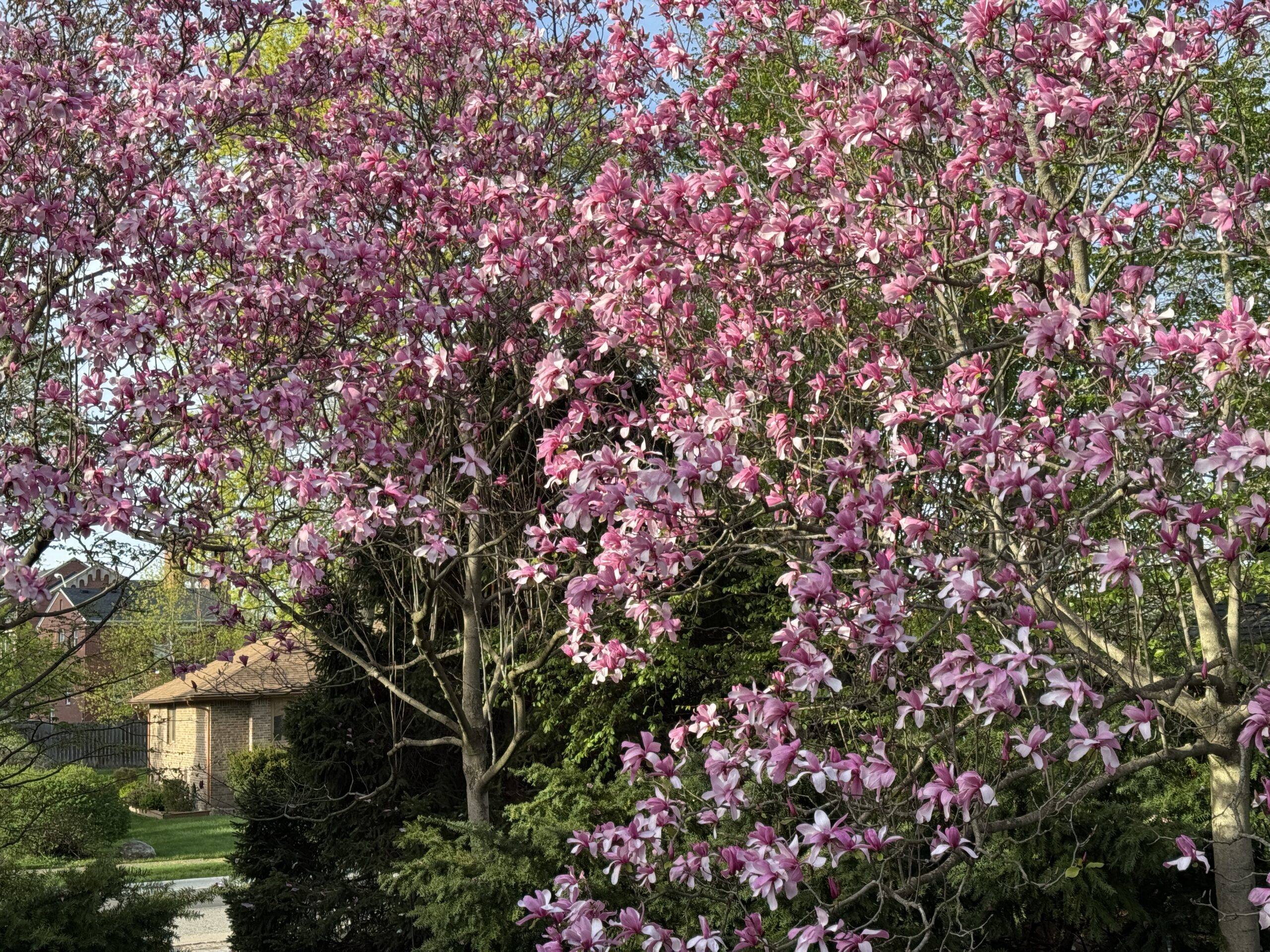
One of my favorite spring moments are the magnolias. Their habit of growth is quite architectural, as are the branches, bark, buds, flowers, leaves, and seed pods. Visually stunning in every aspect, in all the seasons. They make a beautiful specimen tree. There are a number of magnolia soulangiana in my neighborhood – a community which dates back to the early 20th century. It was a popular tree then, and the old trees I see now are still beautiful and healthy. But their flowers can be a victim of a bumpy spring season. A late frost can can damage the blooms, or worse yet, reduce them to puddles of brown mush. A flash frost can leave brown petals dangling from the tree branches. This is a very unattractive and disappointing outcome. Magnolia Stellata is another victim. Mine blooms generously and over a goodly number of weeks only one year out of three or four.
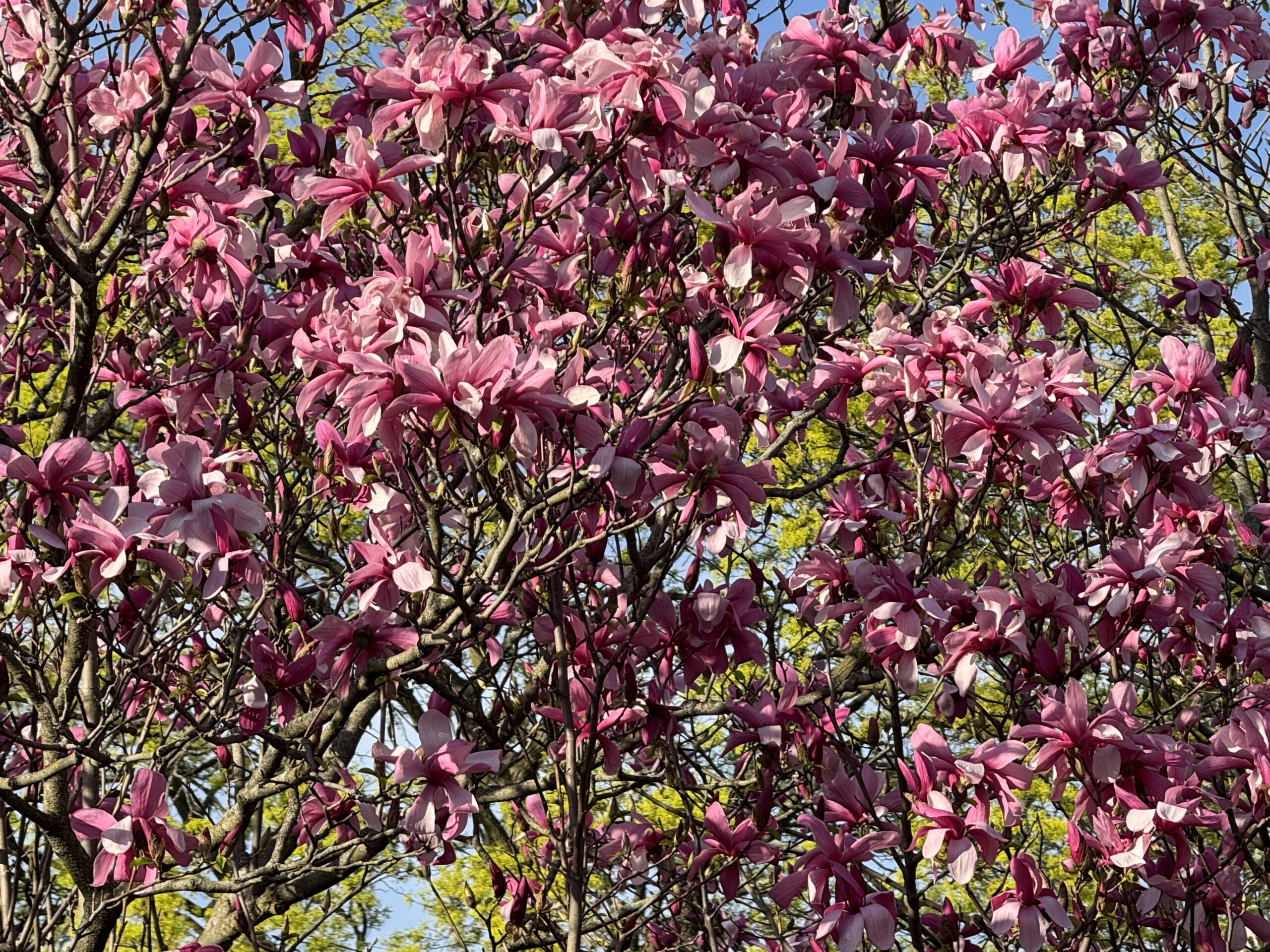 I have three magnolias in my yard which are surely 20 years old by now. The cultivar is named “Galaxy”, which is a National Arboretum plant introduction. The following is from their website: ‘Galaxy’ is an F1 hybrid selection resulting from a 1963 cross between Magnolia liliiflora ‘Nigra’ and M. sprengeri ‘Diva’. ‘Galaxy’ first flowered at 9 years of age from seed. The cultivar name ‘Galaxy’ is registered with the American Magnolia Society. Released in 1980. Magnolia ‘Galaxy’ is unique in form and flower among cultivated magnolias. It is a single stemmed, pyramidal, tree-form magnolia with excellent, ascending branching habit. ‘Galaxy’ flowers 2 weeks after its early parent M.‘Diva’, late enough to avoid most late spring frost damage. Adaptable to a wide range of soil conditions” The late flowering is almost an essential condition for a good choice of magnolia in my zone. The other condition this tree favorably adapts to is its upright habit of growth. I live on a very small city property without the room necessary for a wide growing tree. Even the neighborhood shade trees in the right of way look unhappy, having been jammed into a space that is too small.
I have three magnolias in my yard which are surely 20 years old by now. The cultivar is named “Galaxy”, which is a National Arboretum plant introduction. The following is from their website: ‘Galaxy’ is an F1 hybrid selection resulting from a 1963 cross between Magnolia liliiflora ‘Nigra’ and M. sprengeri ‘Diva’. ‘Galaxy’ first flowered at 9 years of age from seed. The cultivar name ‘Galaxy’ is registered with the American Magnolia Society. Released in 1980. Magnolia ‘Galaxy’ is unique in form and flower among cultivated magnolias. It is a single stemmed, pyramidal, tree-form magnolia with excellent, ascending branching habit. ‘Galaxy’ flowers 2 weeks after its early parent M.‘Diva’, late enough to avoid most late spring frost damage. Adaptable to a wide range of soil conditions” The late flowering is almost an essential condition for a good choice of magnolia in my zone. The other condition this tree favorably adapts to is its upright habit of growth. I live on a very small city property without the room necessary for a wide growing tree. Even the neighborhood shade trees in the right of way look unhappy, having been jammed into a space that is too small.
 As for the flowers, when they are good, they are glorious. The oversized multi petal blooms are the showgirls of the tree flowering world. No other tree can compare, no matter which cultivar you plant. This year, the flowers are beyond fabulous. Not only are the flowers large and robust, the branches of all 3 trees are covered with flowers. They started to open 3 weeks ago, and I could watch that process unfolding day after day. The chilly weather played a big part in creating a lengthy blooming season. Much like cut flowers held in a refrigerated room, cool air temperatures prolong flower life. Once the flowers have been in bloom for a while, the branches begin to leaf out. There is that brief moment where flowers and leaves are vying for attention.
As for the flowers, when they are good, they are glorious. The oversized multi petal blooms are the showgirls of the tree flowering world. No other tree can compare, no matter which cultivar you plant. This year, the flowers are beyond fabulous. Not only are the flowers large and robust, the branches of all 3 trees are covered with flowers. They started to open 3 weeks ago, and I could watch that process unfolding day after day. The chilly weather played a big part in creating a lengthy blooming season. Much like cut flowers held in a refrigerated room, cool air temperatures prolong flower life. Once the flowers have been in bloom for a while, the branches begin to leaf out. There is that brief moment where flowers and leaves are vying for attention.

All trees flower. Some tree flowers go unnoticed, they are so small or otherwise inconspicuous. These magnolias are interplanted with three Parrotia Persica. Related to witch hazel, parrotias produce small red tassel like flowers along the branches in early spring. The red color is equally subtle. I rarely notice the flowers, unless it is a heavy blooming year, and I am standing nearby. Some flowering trees alternate heavy bloom years, as if the recovery from all the energy expended to put on that show takes a long time. Dogwoods and Yellowwoods have a blooming routine like this.
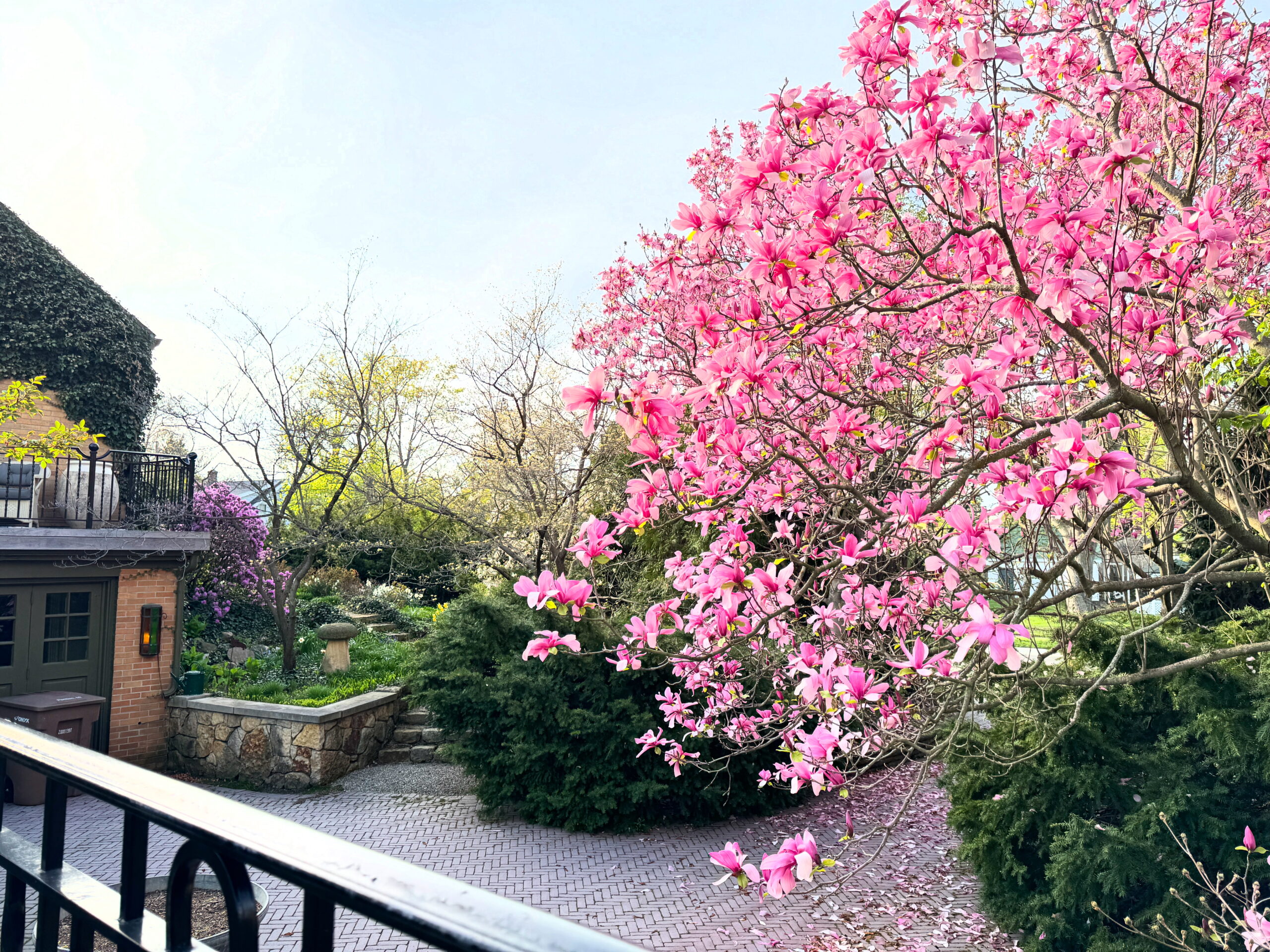 It’s easy to feel ambivalent about spring flowering trees. Do I like them? Some years they all seem breathtaking and gorgeous, like the most beautifully orchestrated and dramatically choreographed ballet ever staged. Other years I avert my eyes at the silliness. How can any plant as stately and serious as a tree have pink flowers? I must be having an on year; I am thoroughly enjoying my trees, and all the other spring flowering trees I am seeing in lavish bloom. The lavish part plays a significant role in this. Conditions favorable to significant bud set the past growing season has resulted in a bumper crop of flowers this spring season. Any plant blooming its heart out is just cause for celebration.
It’s easy to feel ambivalent about spring flowering trees. Do I like them? Some years they all seem breathtaking and gorgeous, like the most beautifully orchestrated and dramatically choreographed ballet ever staged. Other years I avert my eyes at the silliness. How can any plant as stately and serious as a tree have pink flowers? I must be having an on year; I am thoroughly enjoying my trees, and all the other spring flowering trees I am seeing in lavish bloom. The lavish part plays a significant role in this. Conditions favorable to significant bud set the past growing season has resulted in a bumper crop of flowers this spring season. Any plant blooming its heart out is just cause for celebration.
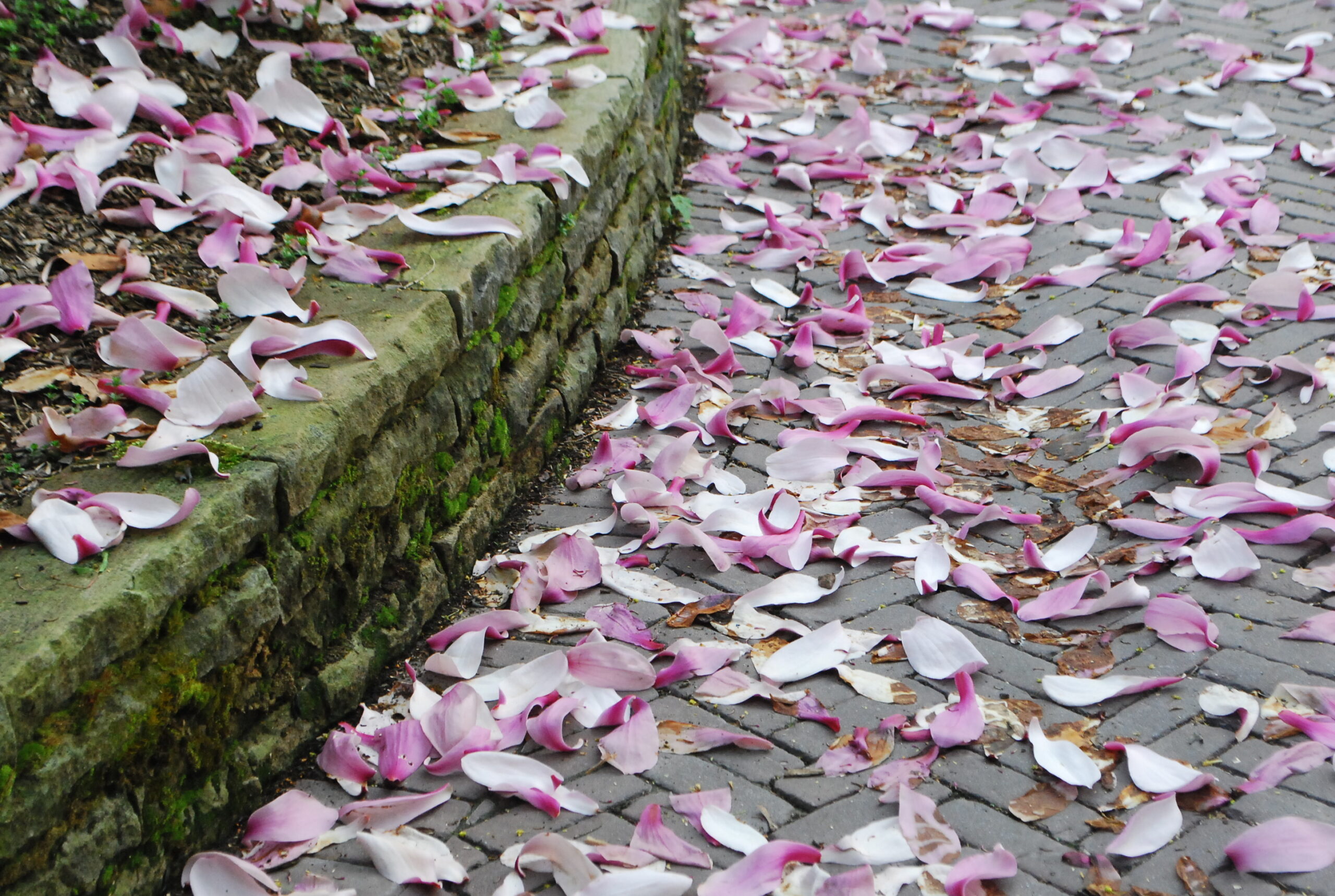 This first week of May is the beginning of the end of it. The subtle sound of the petals dropping on my driveway can be heard, should I make a point to listen. As the petals pile up, so do the memories.
This first week of May is the beginning of the end of it. The subtle sound of the petals dropping on my driveway can be heard, should I make a point to listen. As the petals pile up, so do the memories.
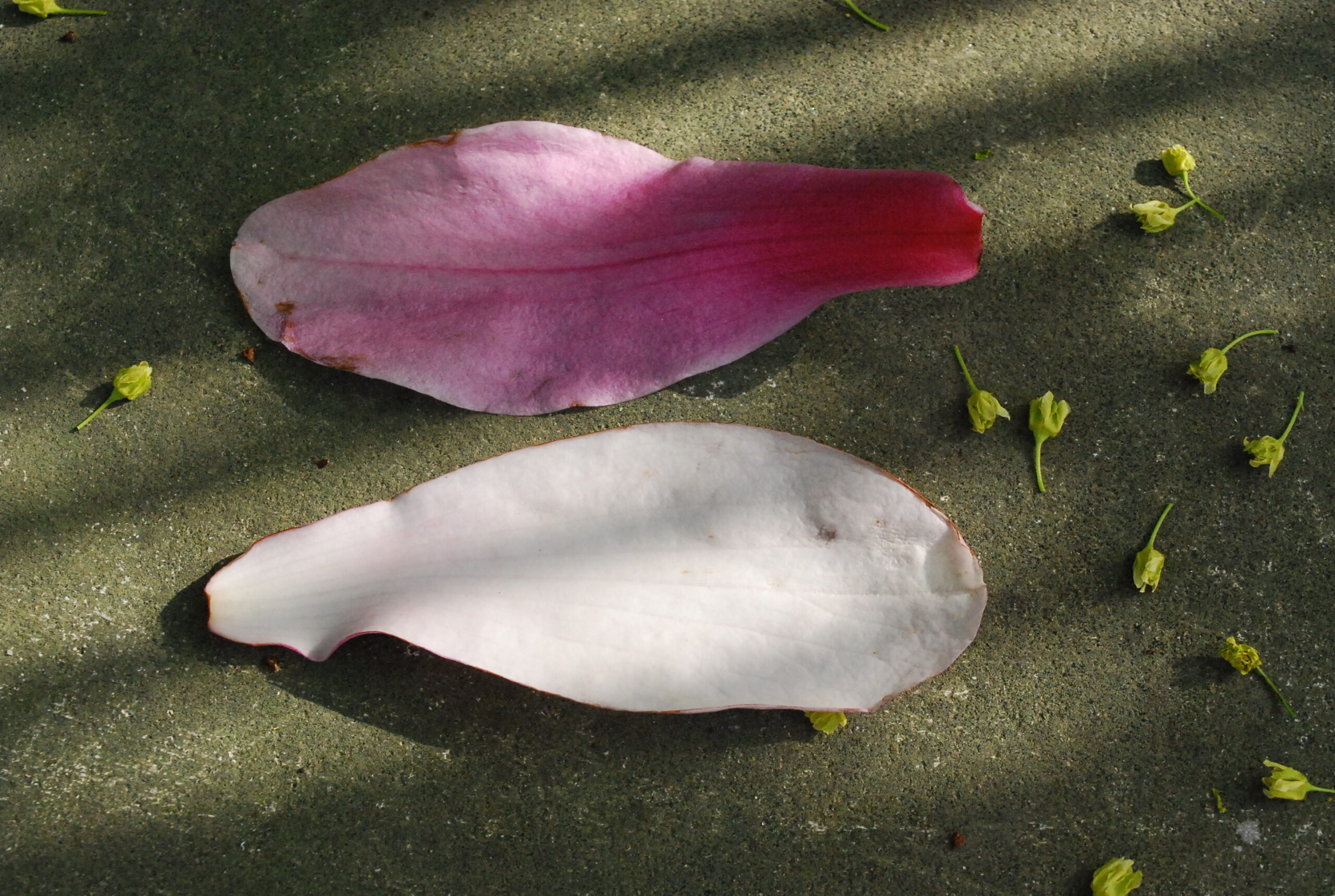 Spring. This is it.
Spring. This is it.

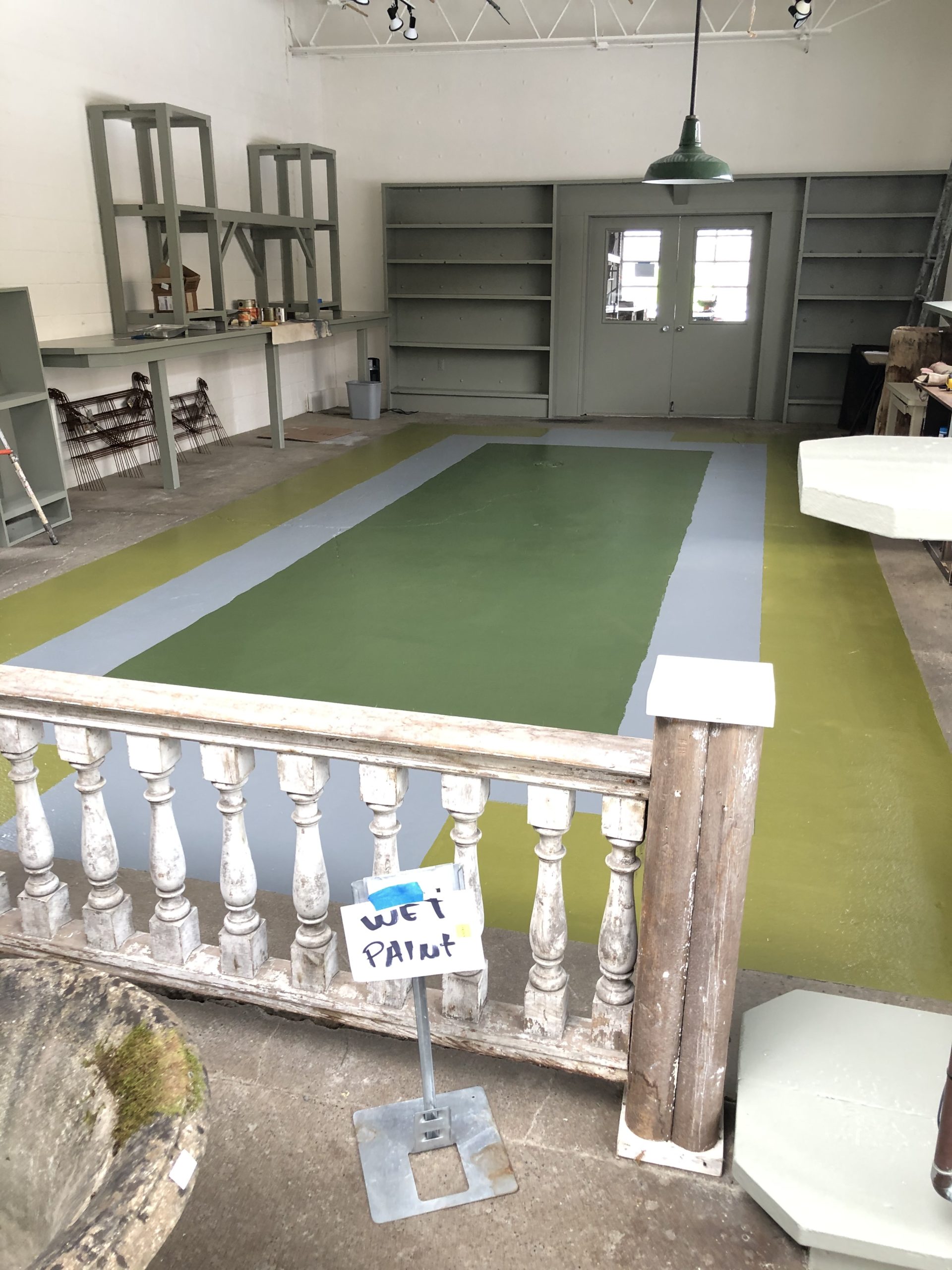
 This picture clearly shows the largest area of wear sustained by the previous floor. Part of our concrete block wall sprung a leak, and water had been sitting in this spot on and off for several years. The rest of that floor was in remarkably good condition. I ascribe that in total to the quality of the paint. Porter Paint, routinely used by sign painters, comes in a 100% acrylic formula which hardens much more than latex paint. Owned by PPG, Porter’s exterior Acri-Shield paint is exceptionally durable and comes in a vast number of colors. It is eminently strong enough to use as a floor paint. Happily, one of a few paint stores in Michigan that carries this paint is near us. See more about this great paint store here:
This picture clearly shows the largest area of wear sustained by the previous floor. Part of our concrete block wall sprung a leak, and water had been sitting in this spot on and off for several years. The rest of that floor was in remarkably good condition. I ascribe that in total to the quality of the paint. Porter Paint, routinely used by sign painters, comes in a 100% acrylic formula which hardens much more than latex paint. Owned by PPG, Porter’s exterior Acri-Shield paint is exceptionally durable and comes in a vast number of colors. It is eminently strong enough to use as a floor paint. Happily, one of a few paint stores in Michigan that carries this paint is near us. See more about this great paint store here:  The floor would have but a few elements. A grassy plane, admirably described by the French as a “tapis vert”, is as elemental a garden as any. And it is the starting point for any number of more elaborate expressions. That green square is a prominent part of the logo for the Works. In additional to the green plane, there would be a surrounding gravel path, and a planted area marked by large leaves to enclose that gravel. Painting the gravel was the first order of business, as plants from both sides would likely overlap onto it.
The floor would have but a few elements. A grassy plane, admirably described by the French as a “tapis vert”, is as elemental a garden as any. And it is the starting point for any number of more elaborate expressions. That green square is a prominent part of the logo for the Works. In additional to the green plane, there would be a surrounding gravel path, and a planted area marked by large leaves to enclose that gravel. Painting the gravel was the first order of business, as plants from both sides would likely overlap onto it.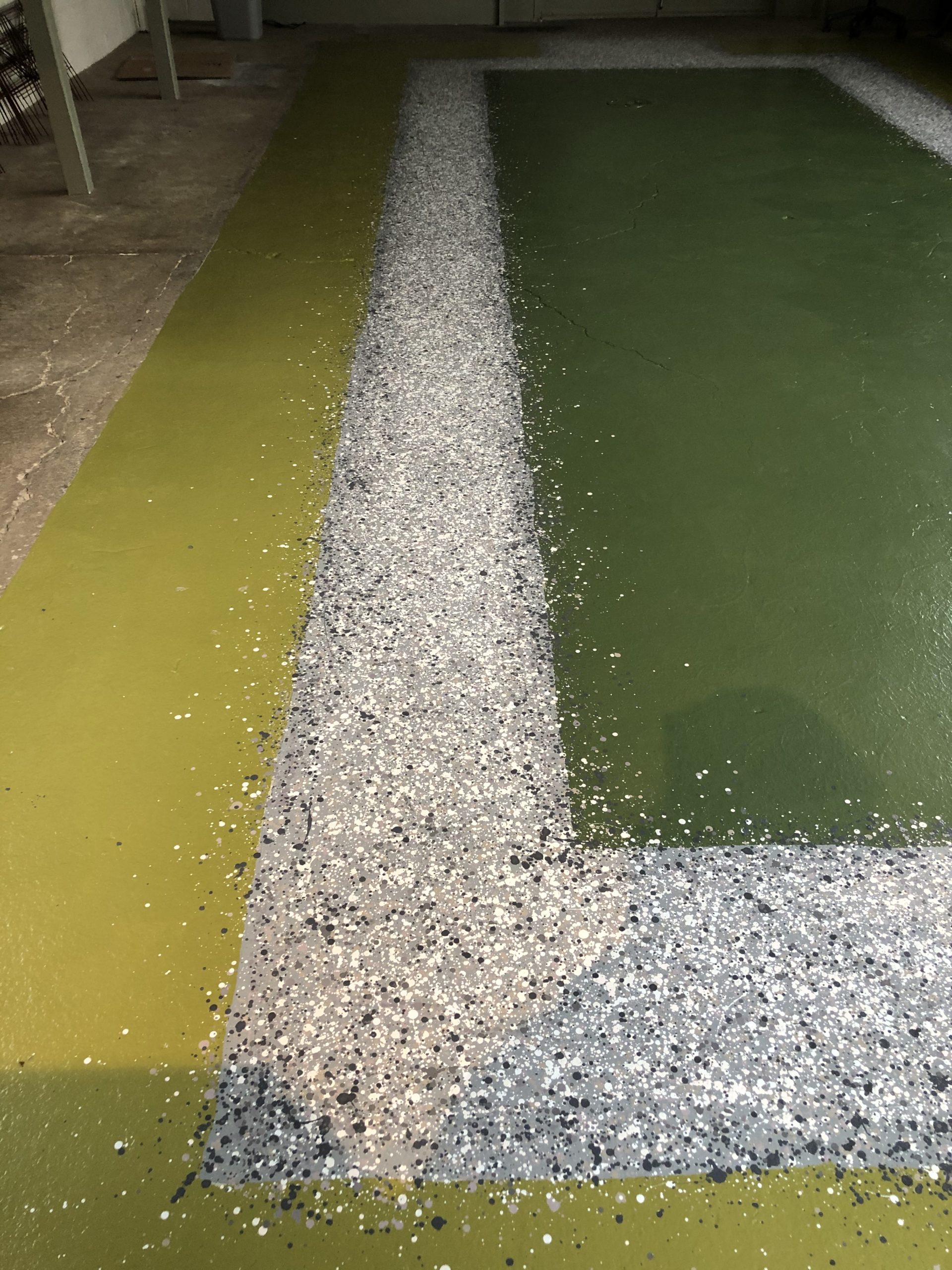 This would be the easiest part of the painting. A series of colors would be dripped on to the floor surface from a wood plant marker. The only finesse to this part would be slowly thinning the paint so it would drip at a reasonable rate-not too slow, and not too fast. Of course there was plenty of wrist and shoulder action, so the drips would be spaced out.
This would be the easiest part of the painting. A series of colors would be dripped on to the floor surface from a wood plant marker. The only finesse to this part would be slowly thinning the paint so it would drip at a reasonable rate-not too slow, and not too fast. Of course there was plenty of wrist and shoulder action, so the drips would be spaced out.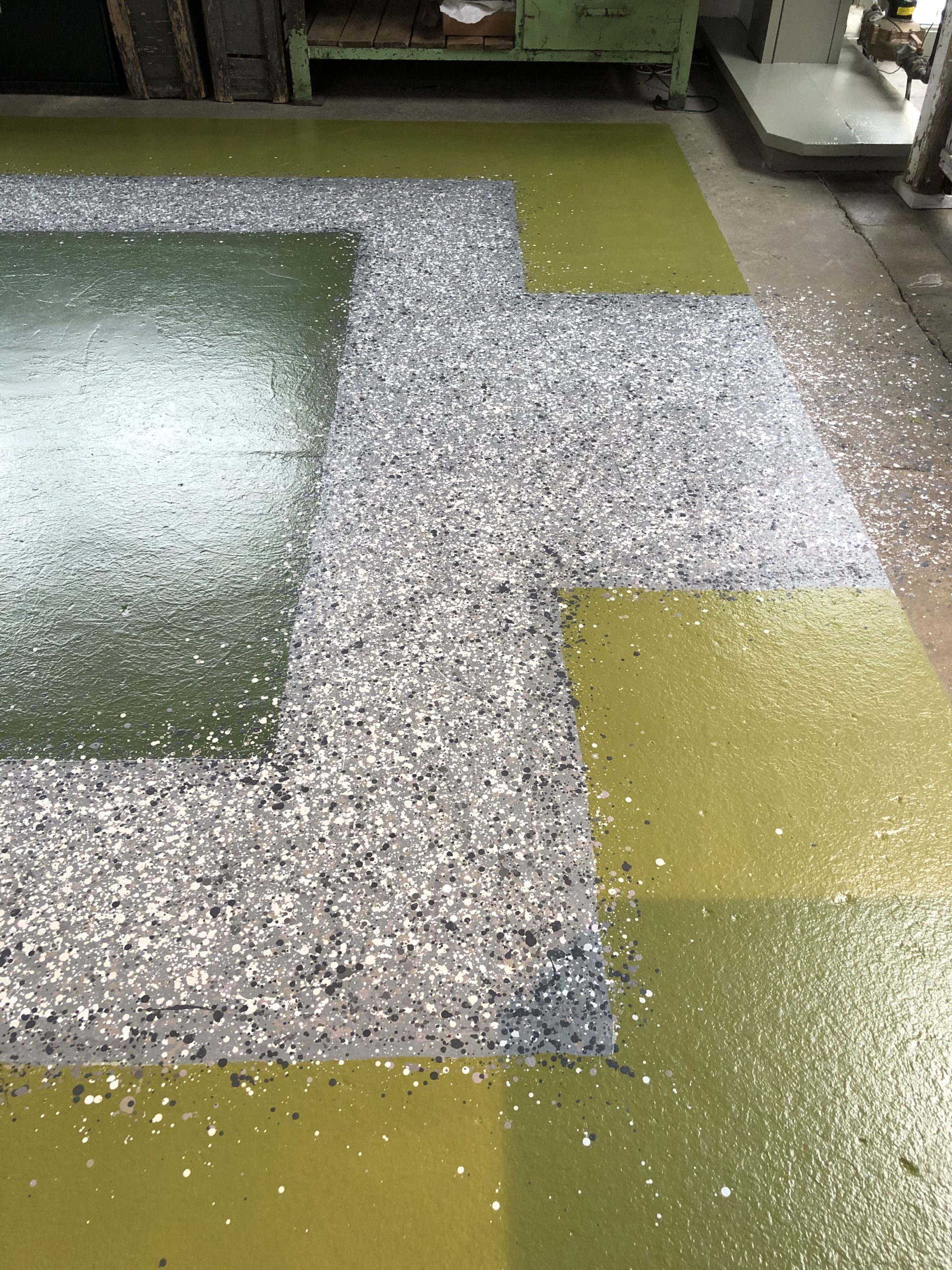
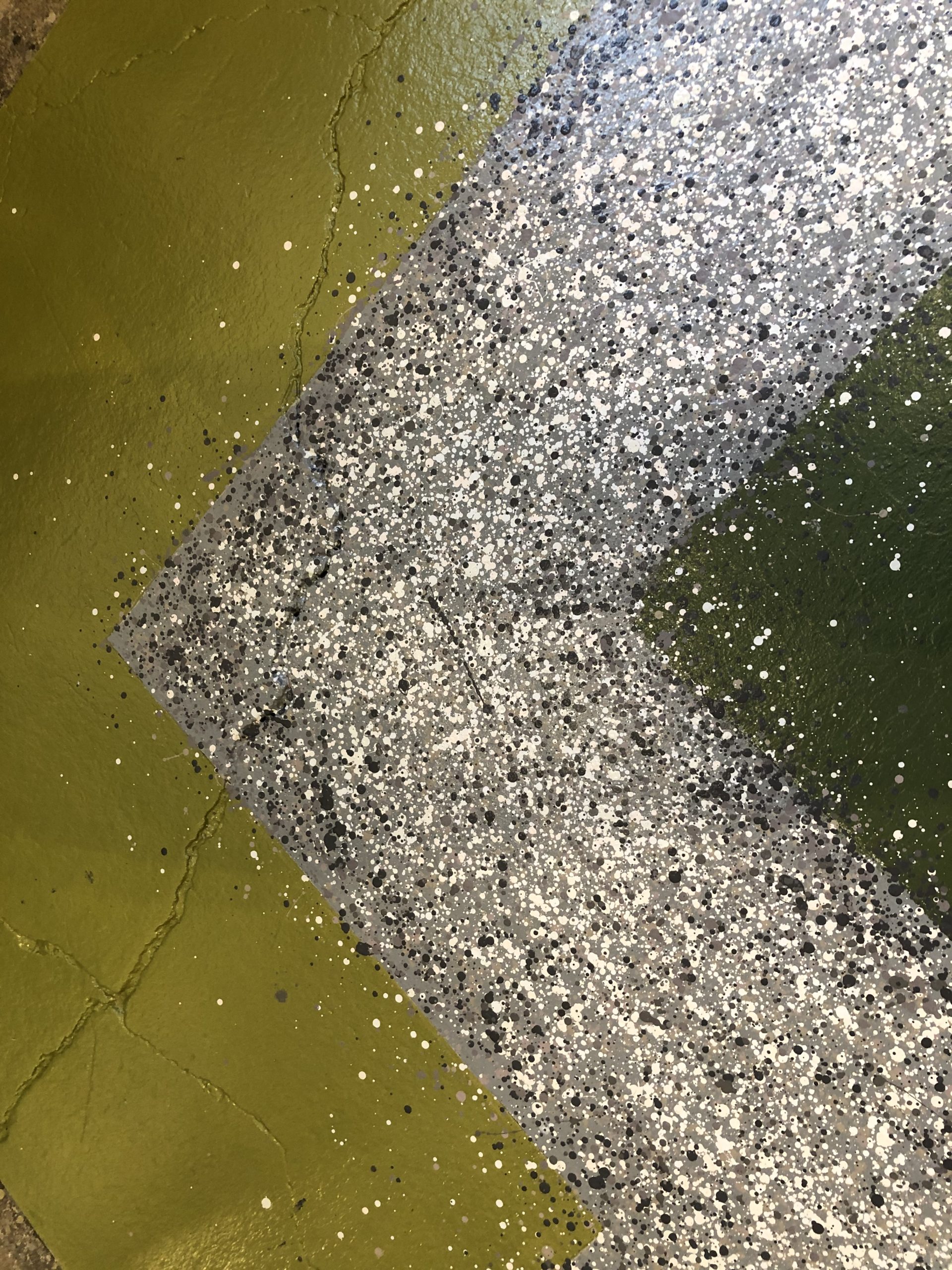 Some effort was made to keep the gravel darker and less detailed on the edges. Once the leaves to come were painted over the edges, that would help create a little sense of depth. This is decorative painting-not fine art. But a nod to composition and technique gives the mural a little more polished look.
Some effort was made to keep the gravel darker and less detailed on the edges. Once the leaves to come were painted over the edges, that would help create a little sense of depth. This is decorative painting-not fine art. But a nod to composition and technique gives the mural a little more polished look.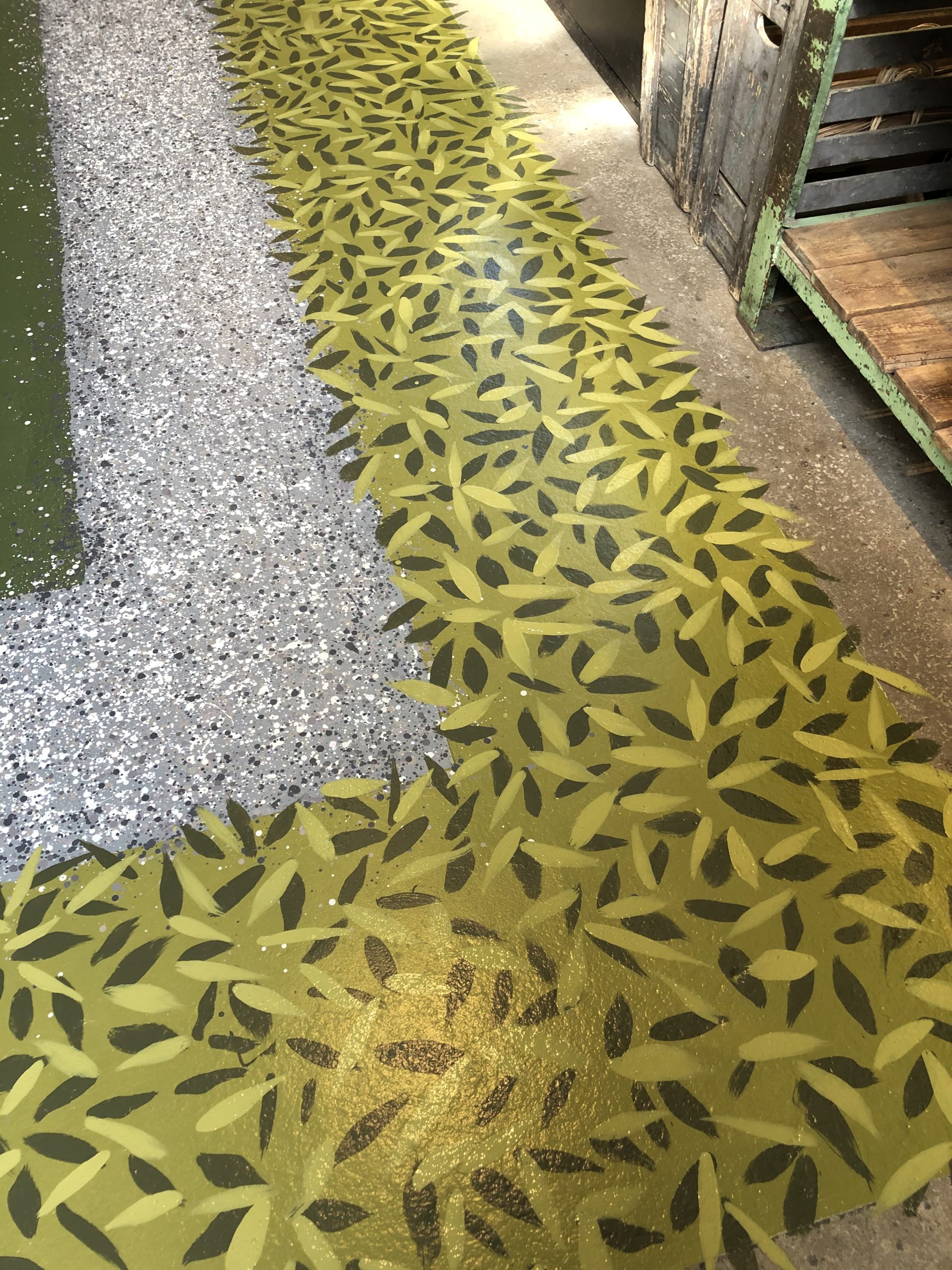
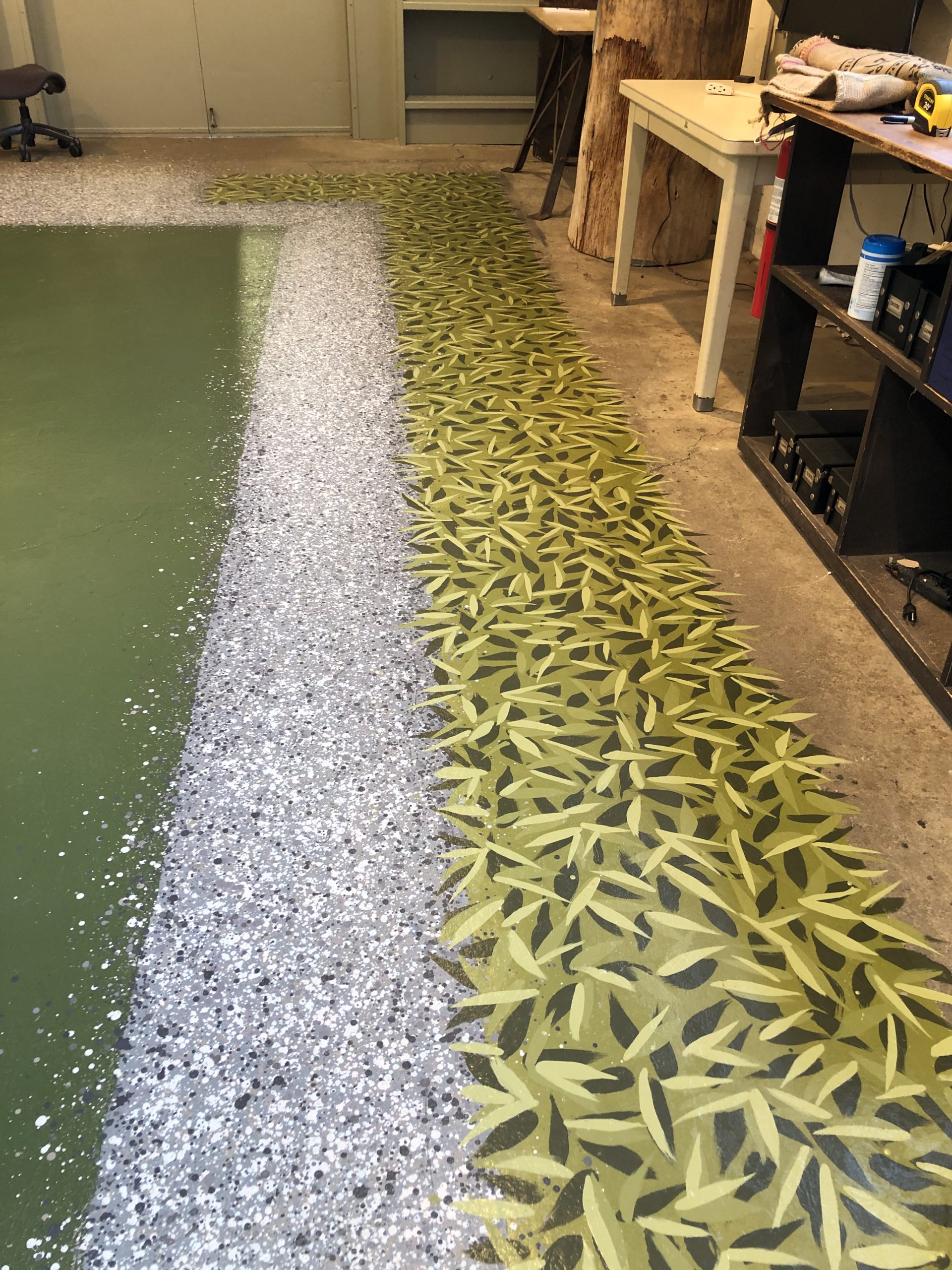
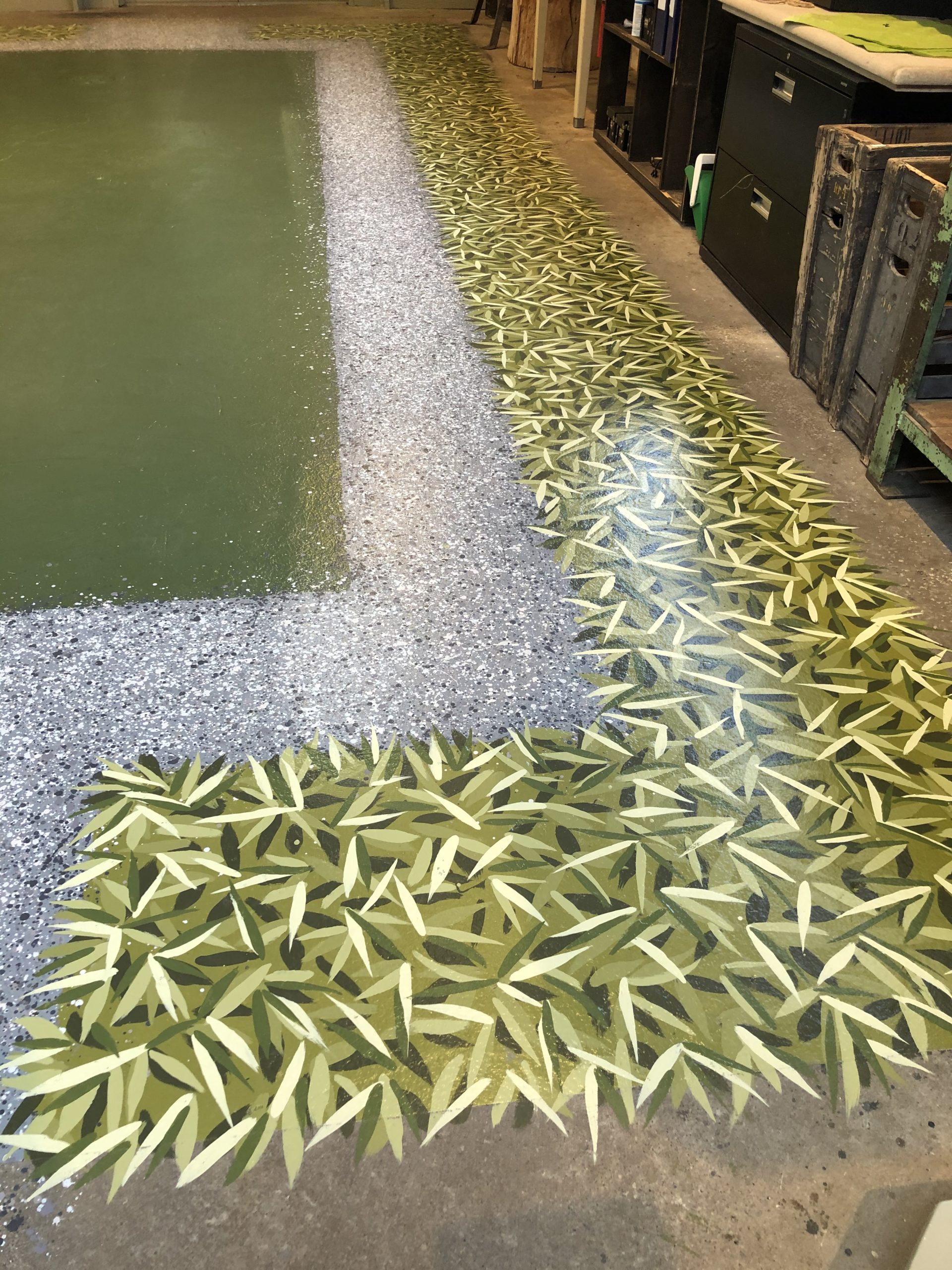
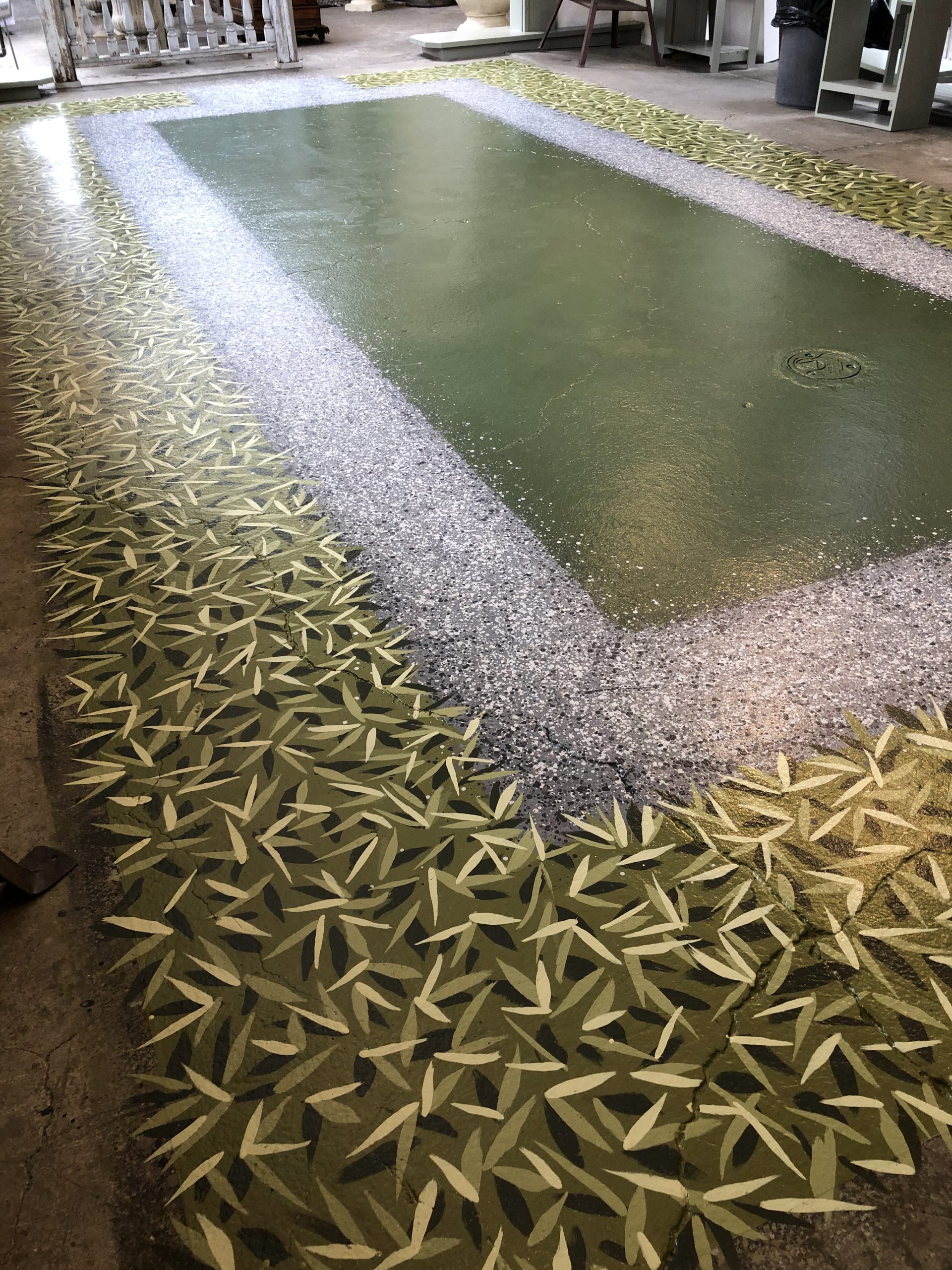

 Those marks were very lively. They brought the dark center up to the same visual plane as the gravel. Eventually I settled in to the job, and two days later that portion was finished.
Those marks were very lively. They brought the dark center up to the same visual plane as the gravel. Eventually I settled in to the job, and two days later that portion was finished.
